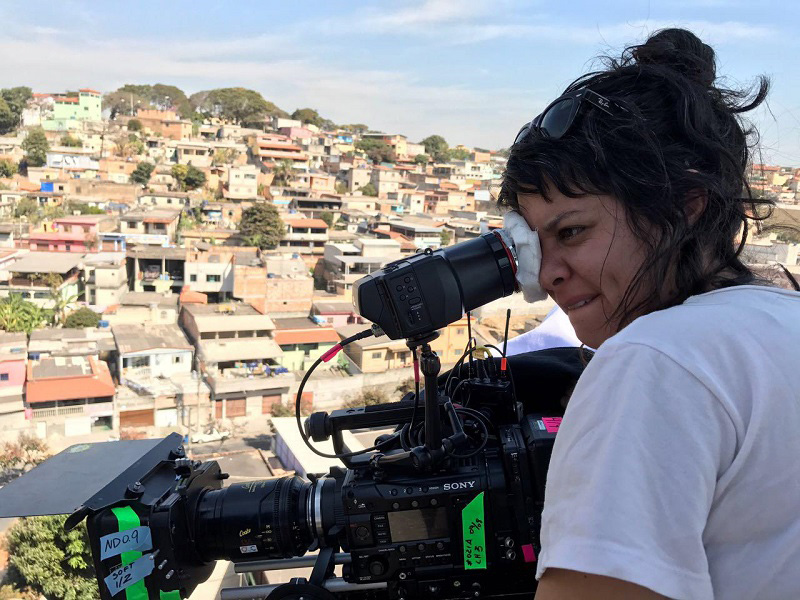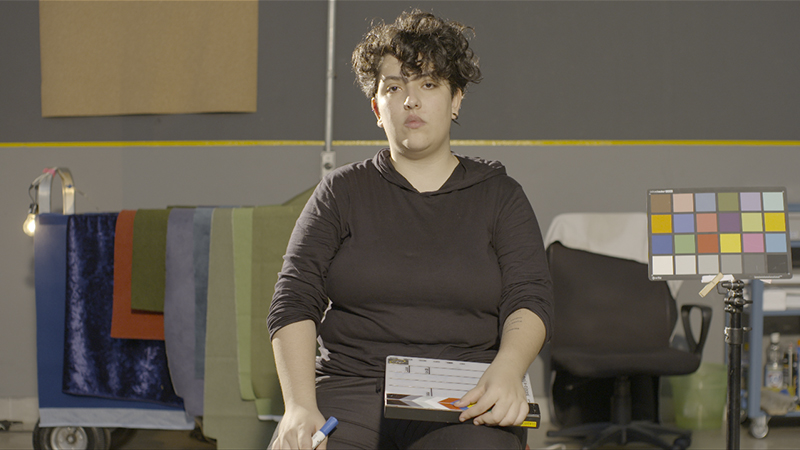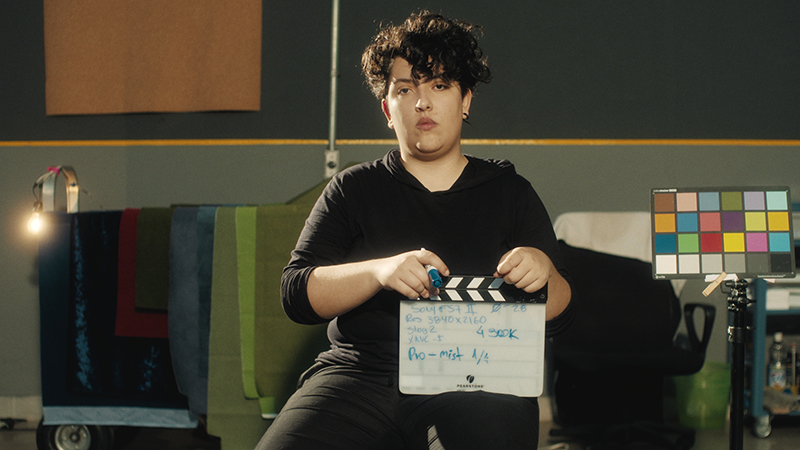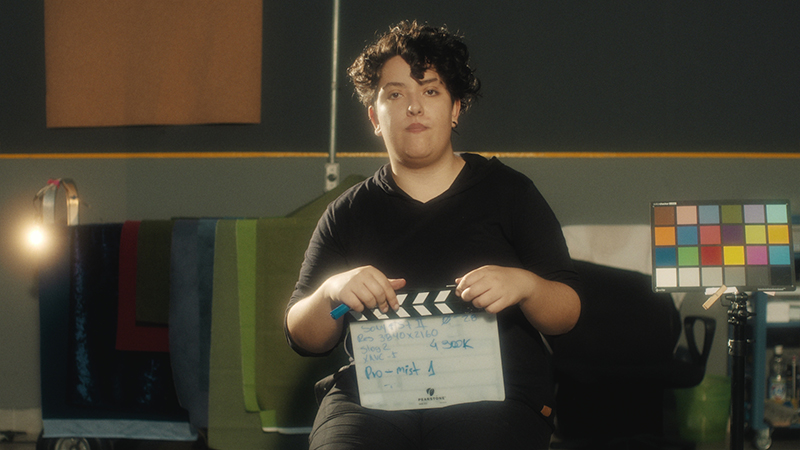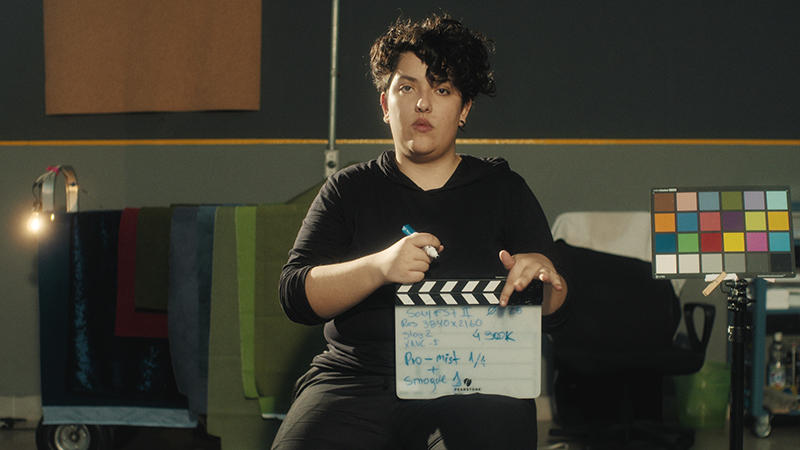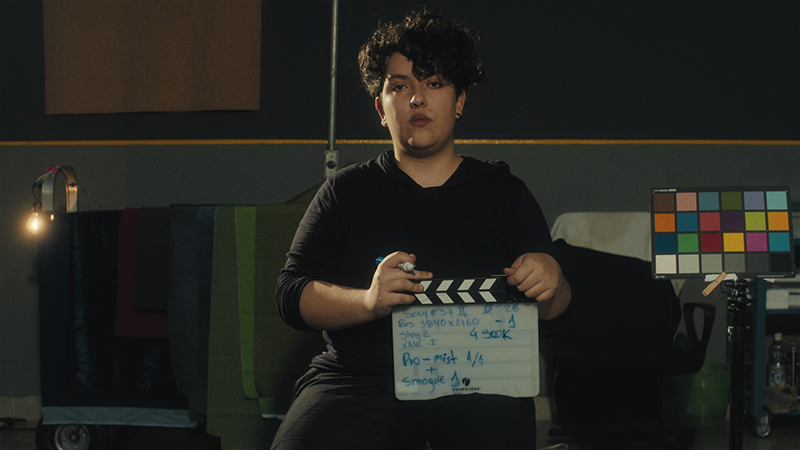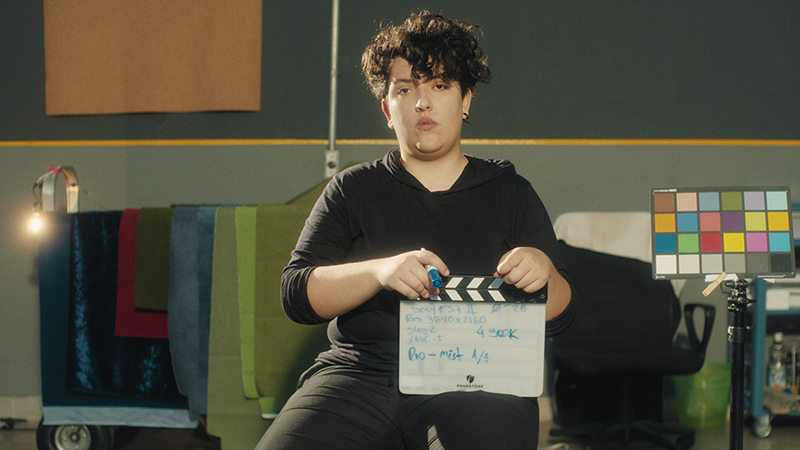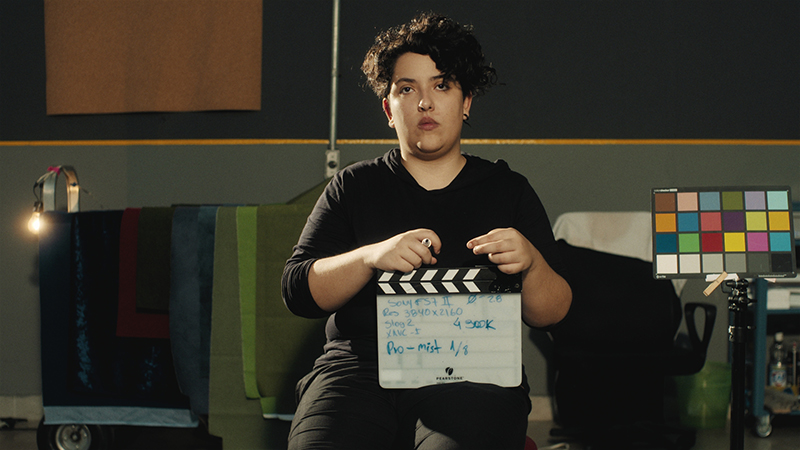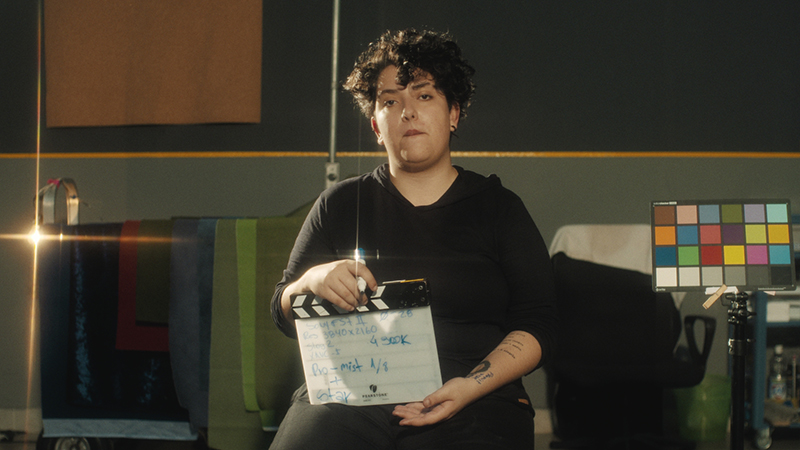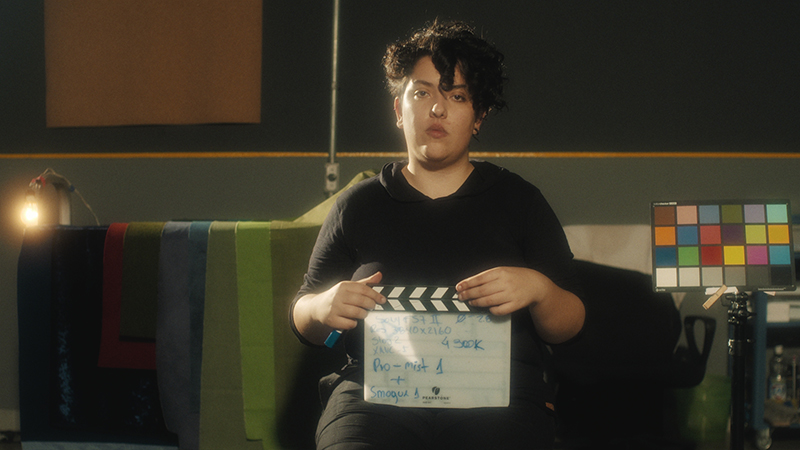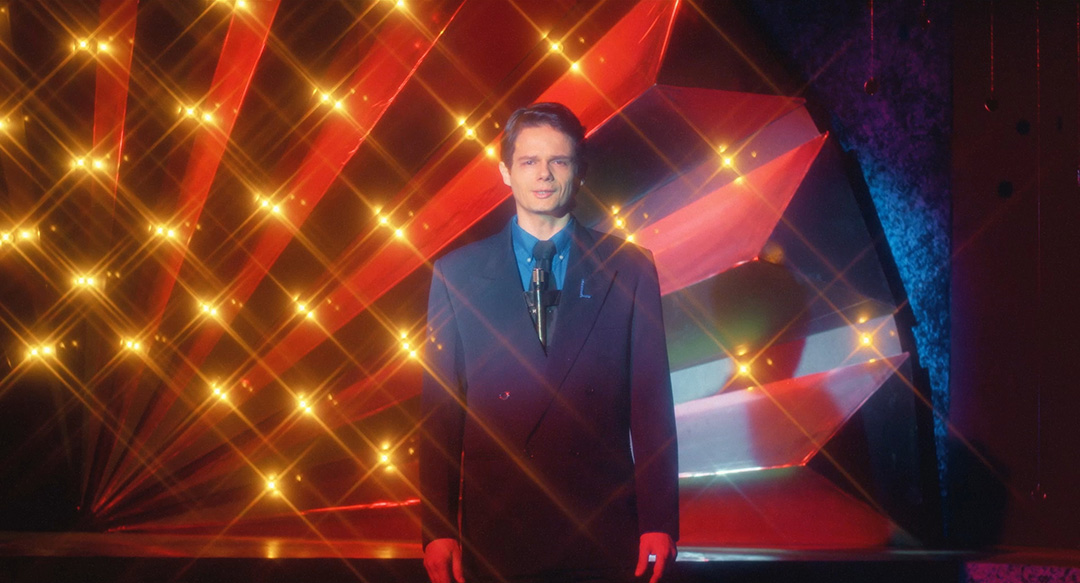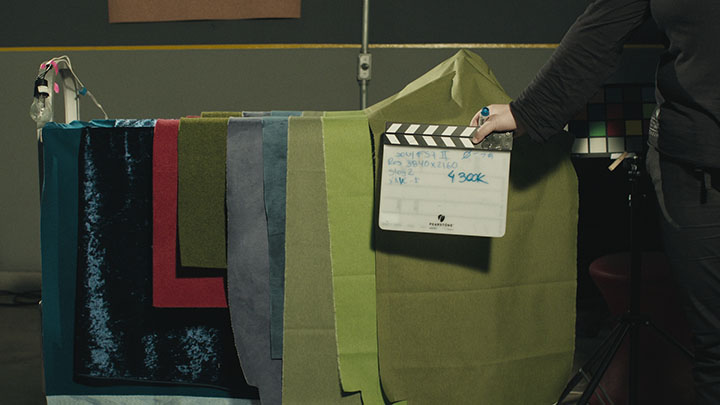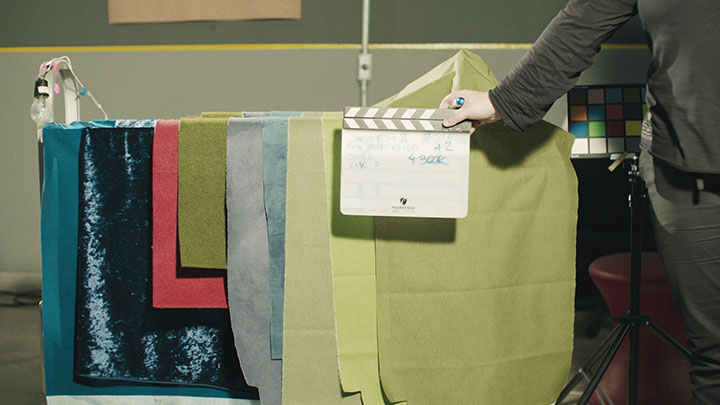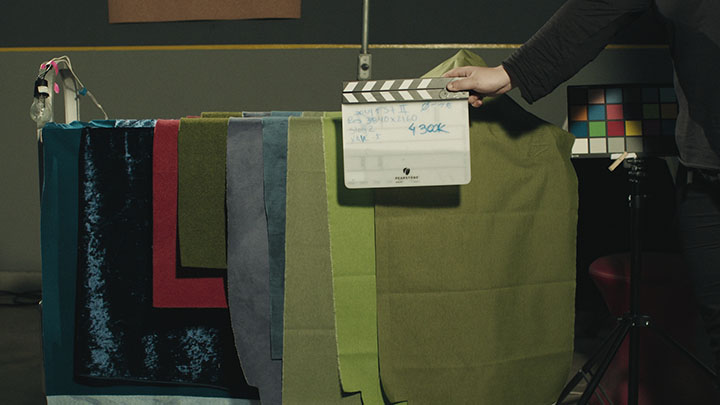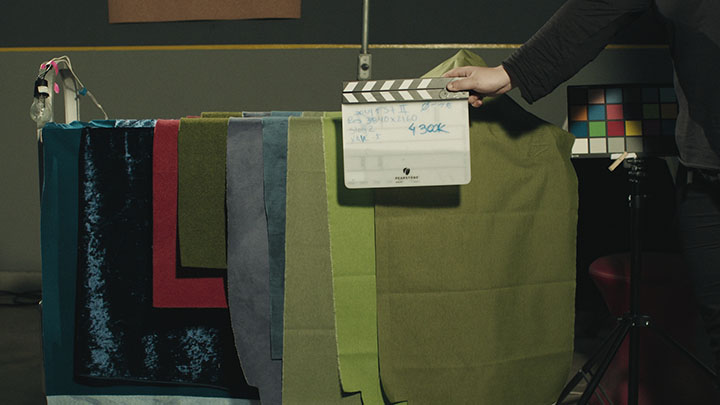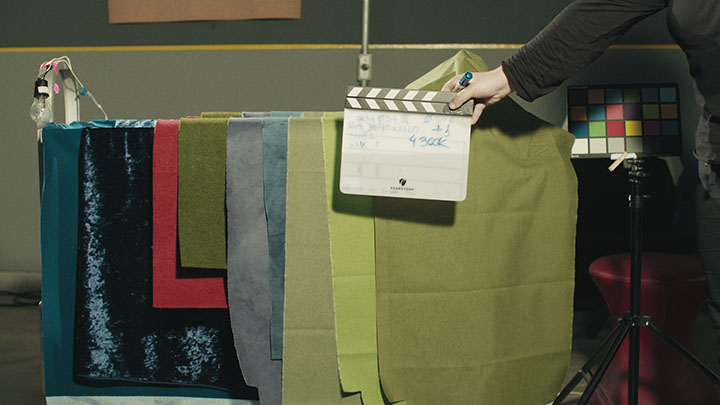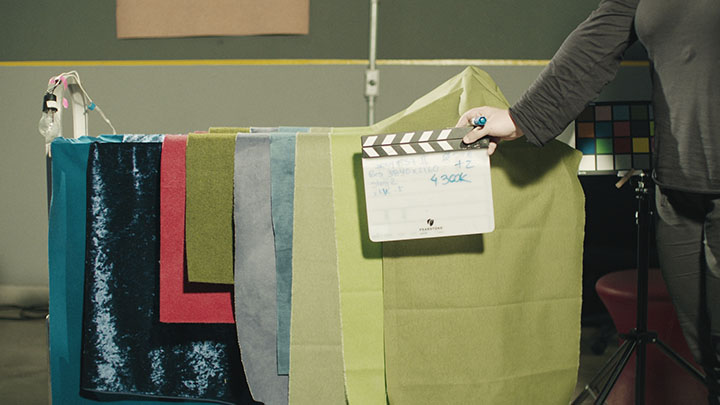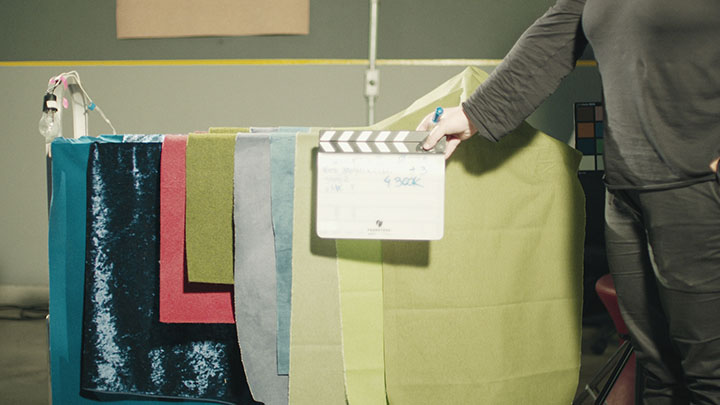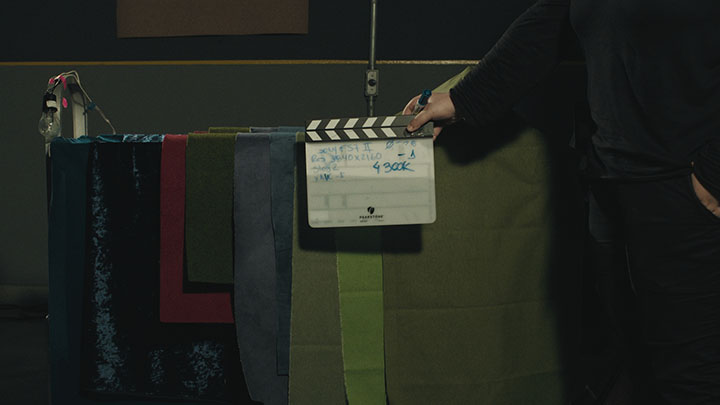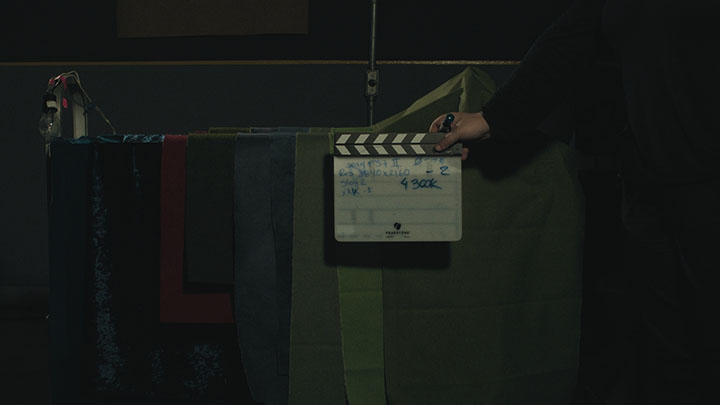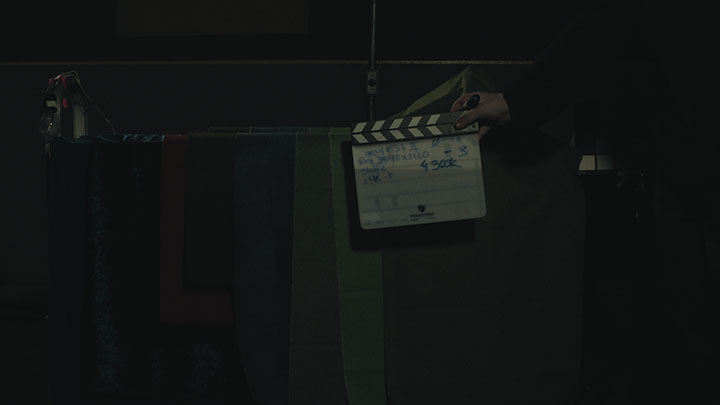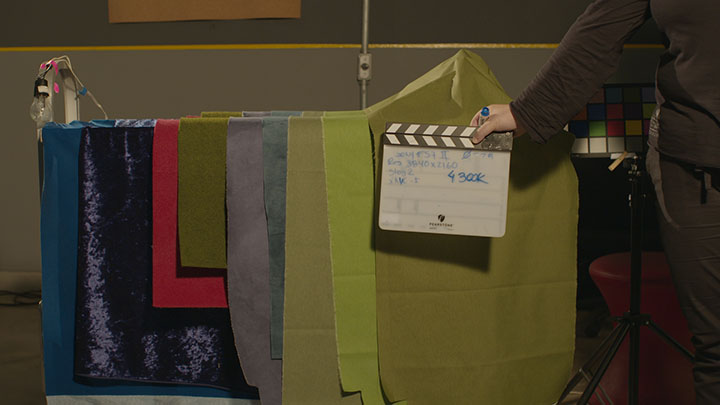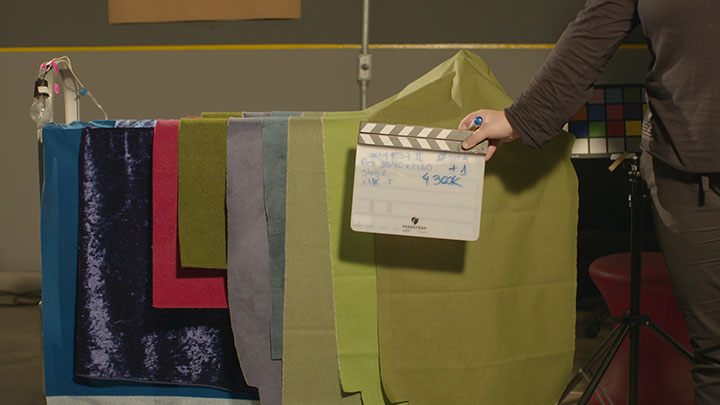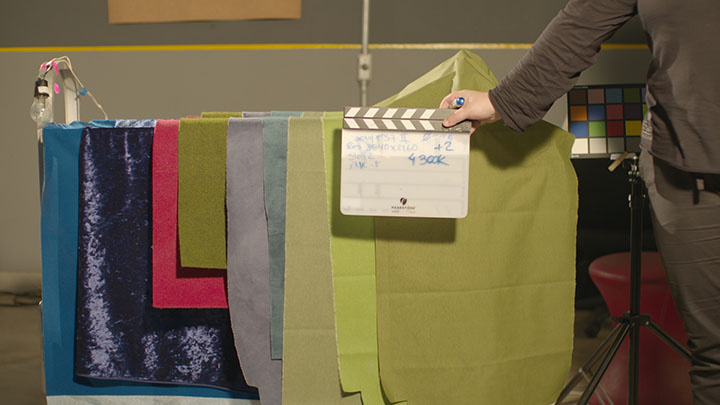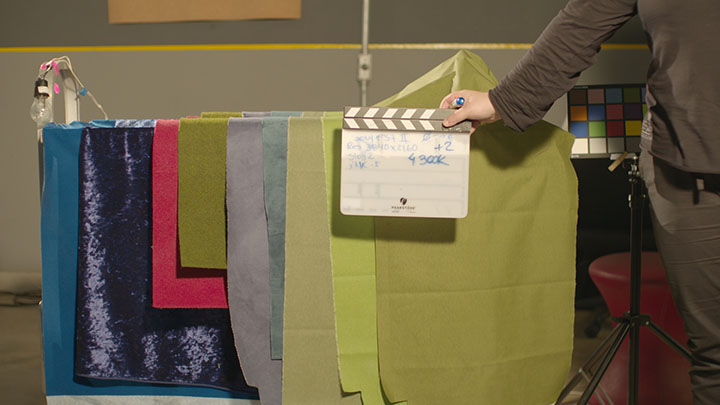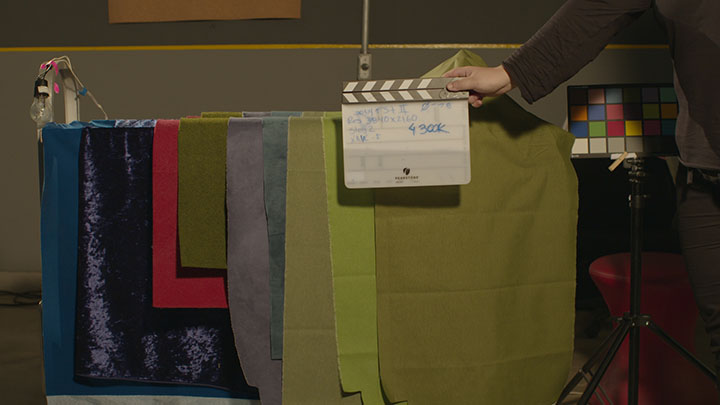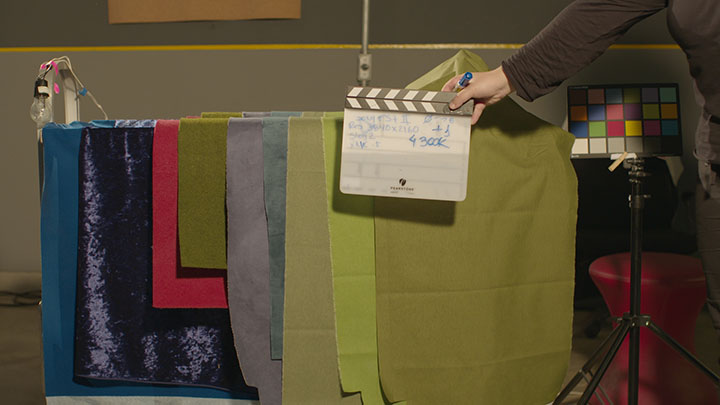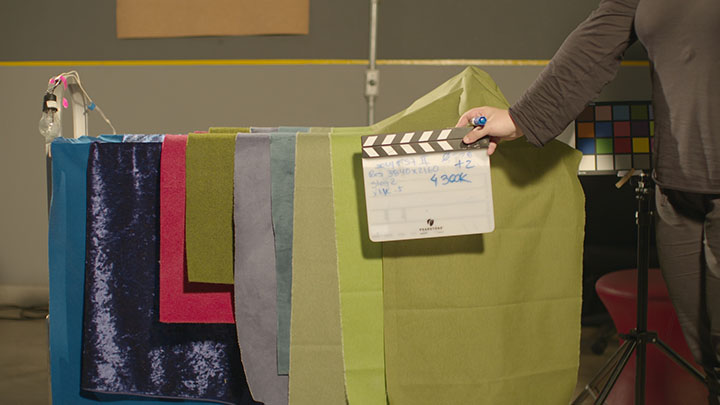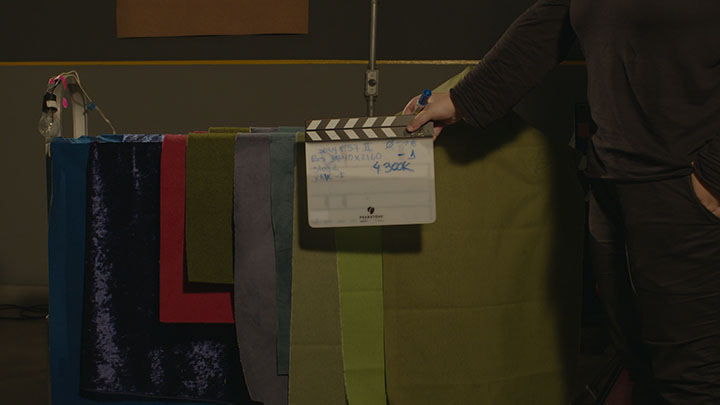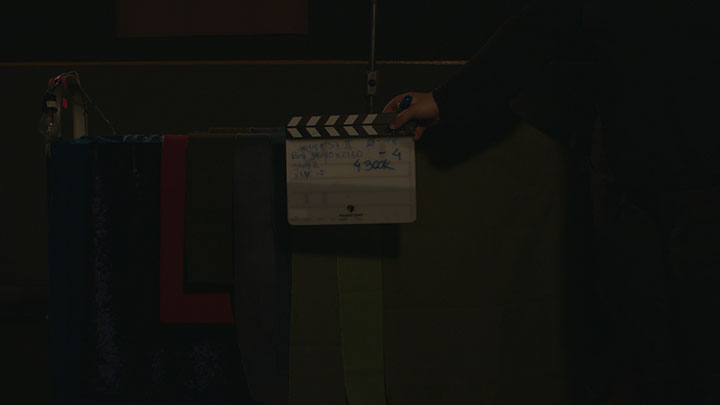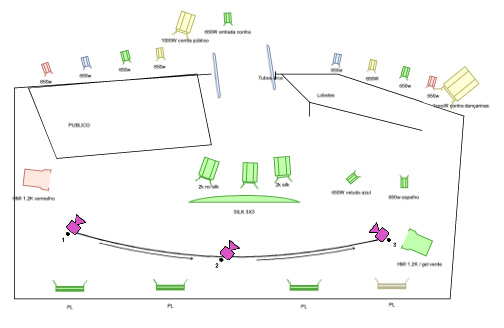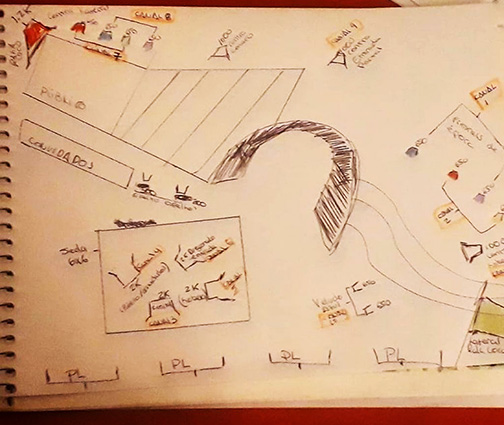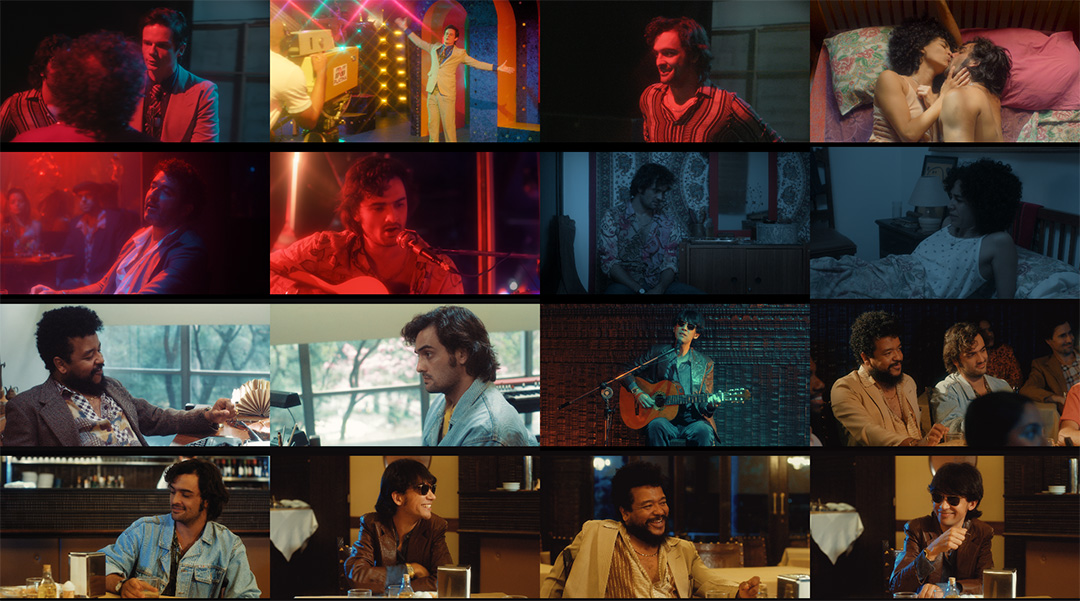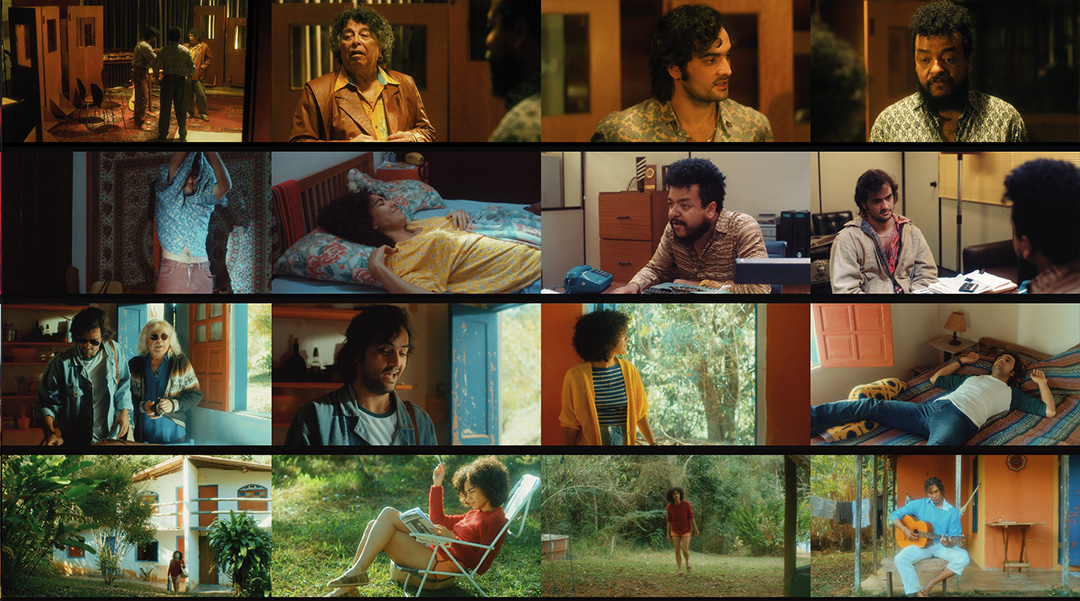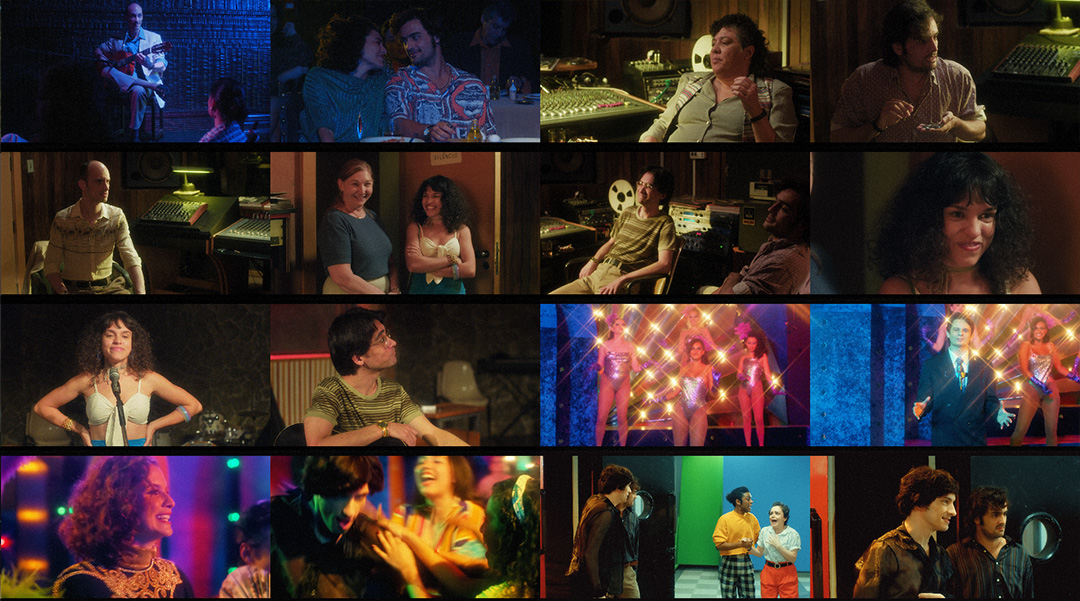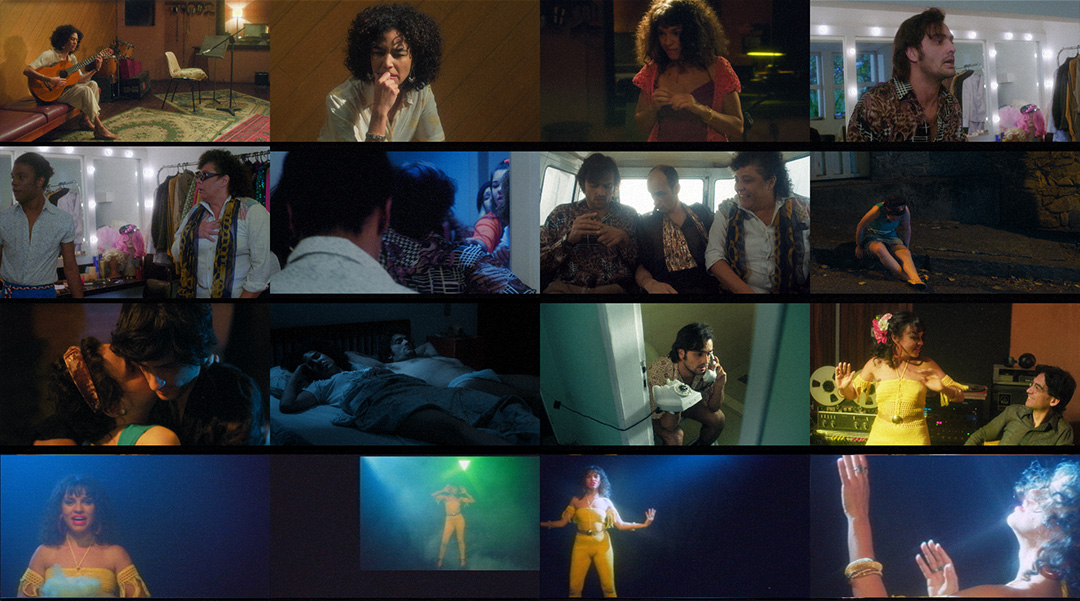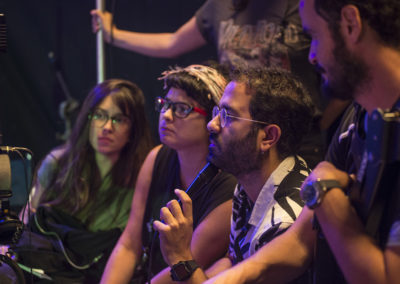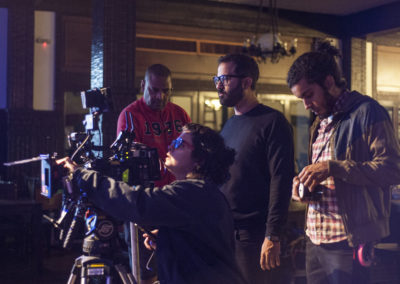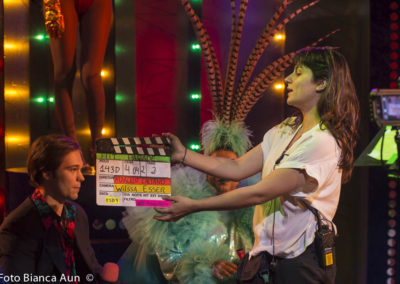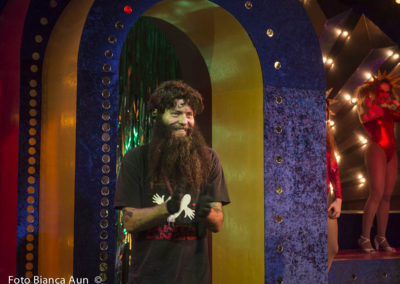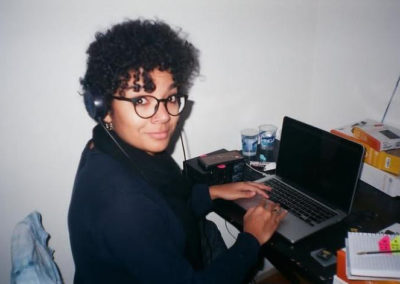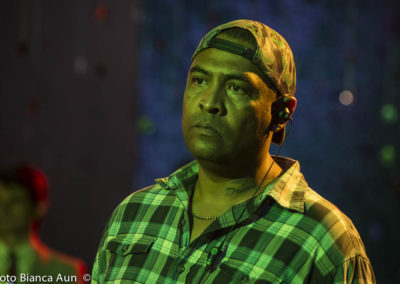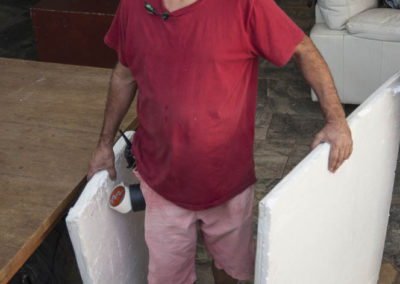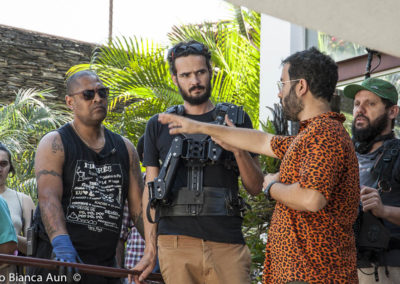SERIES / CANAL BRASIL
HIT PARADE
By Wilssa Esser
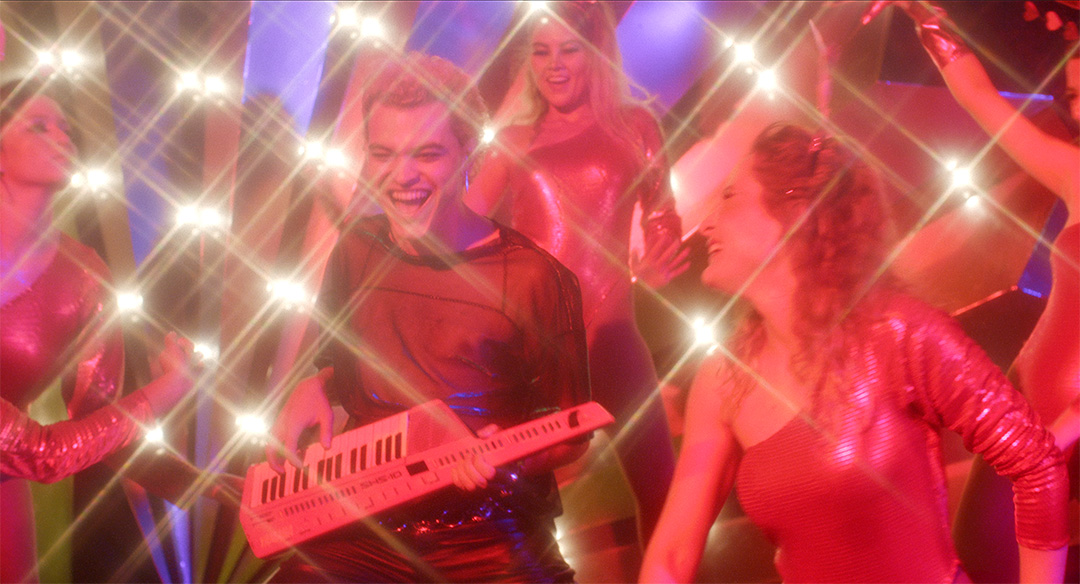
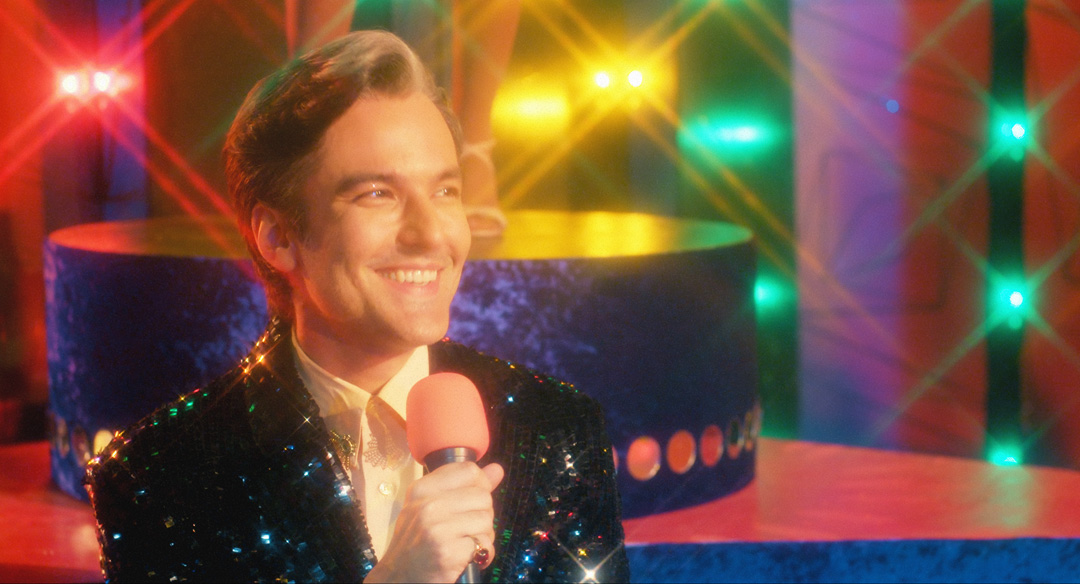
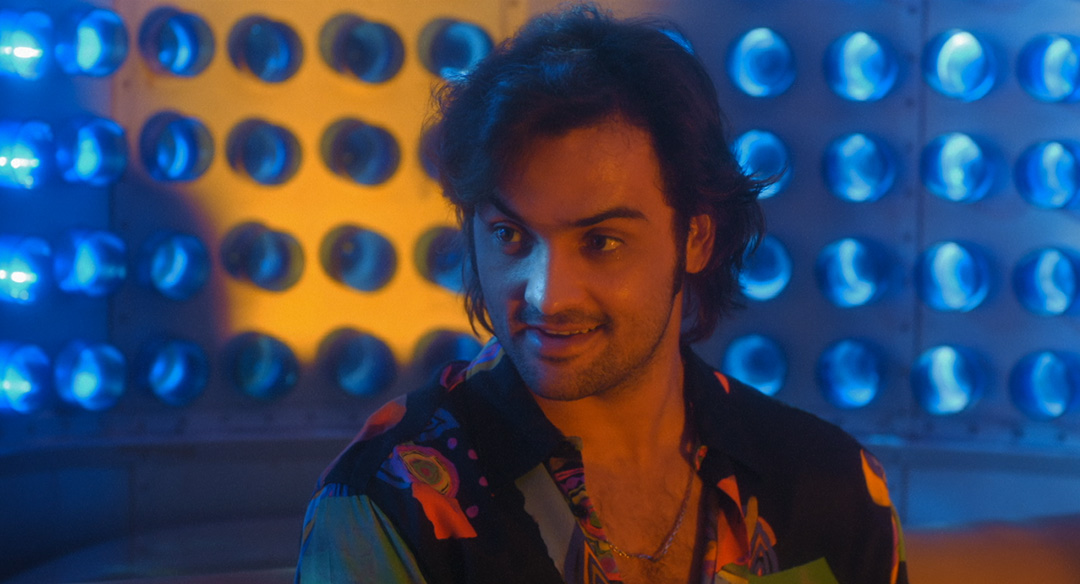
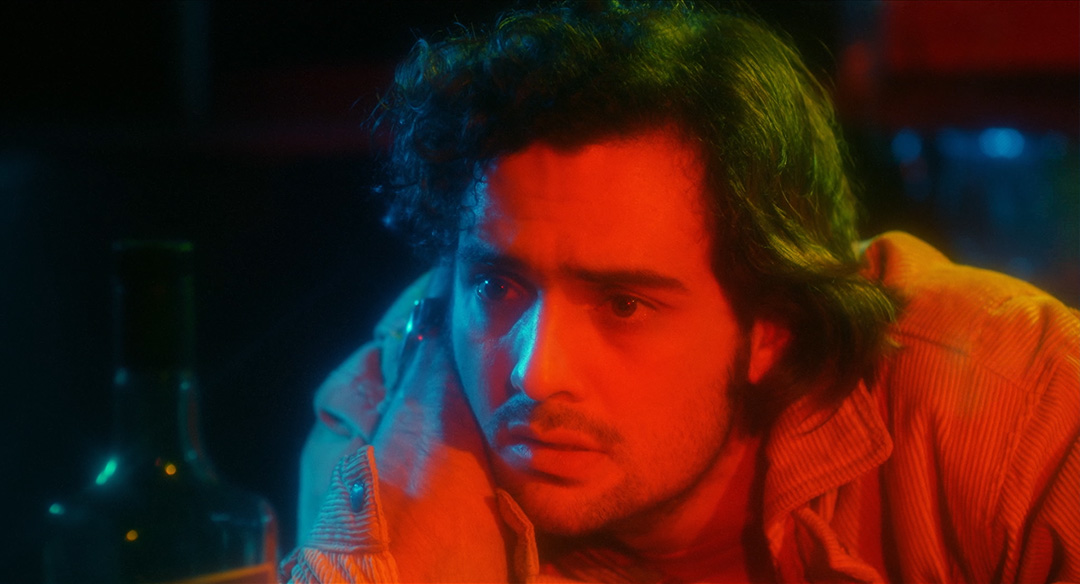
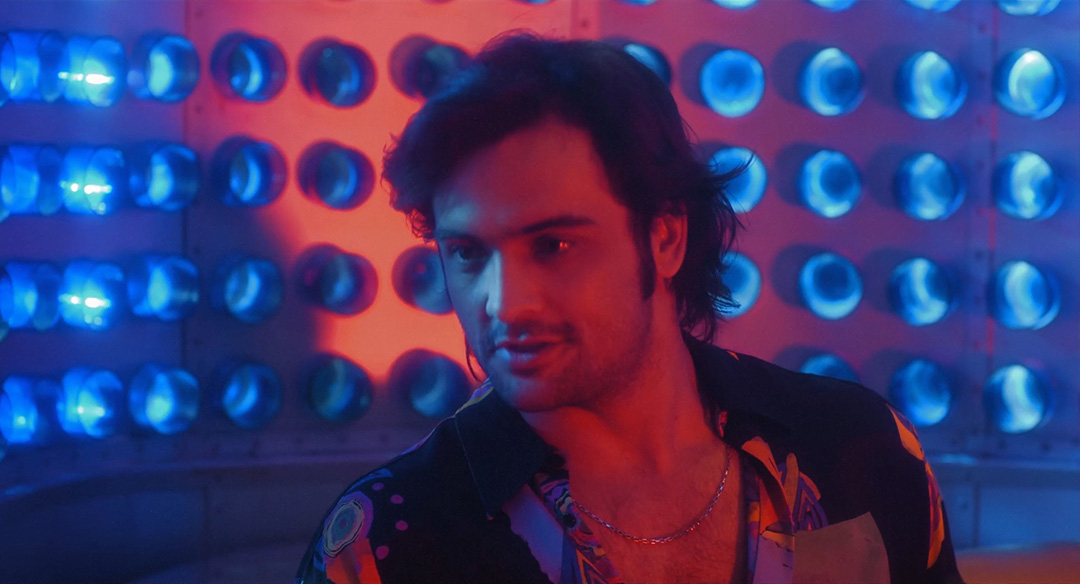
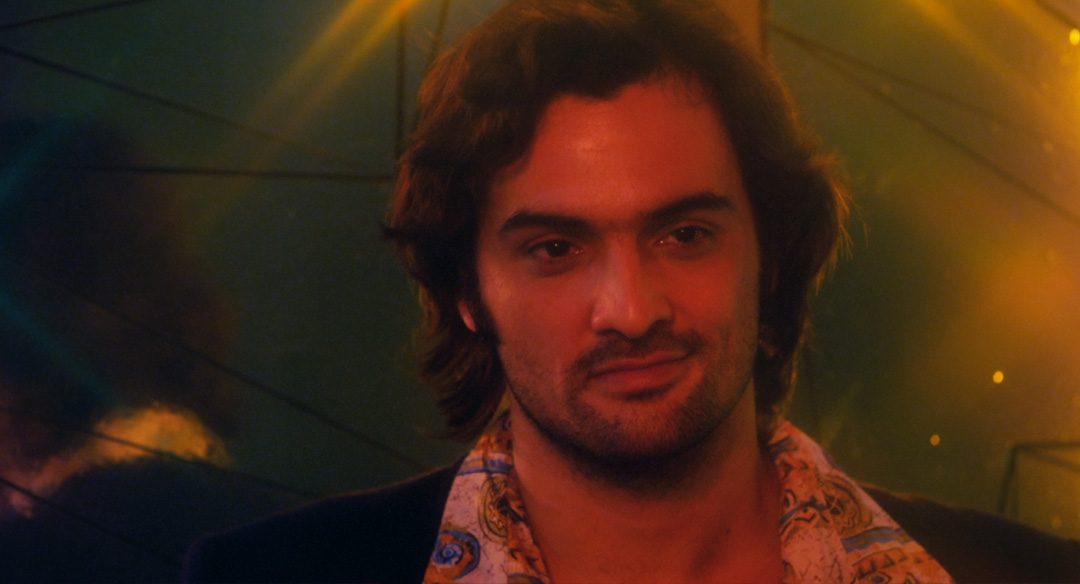

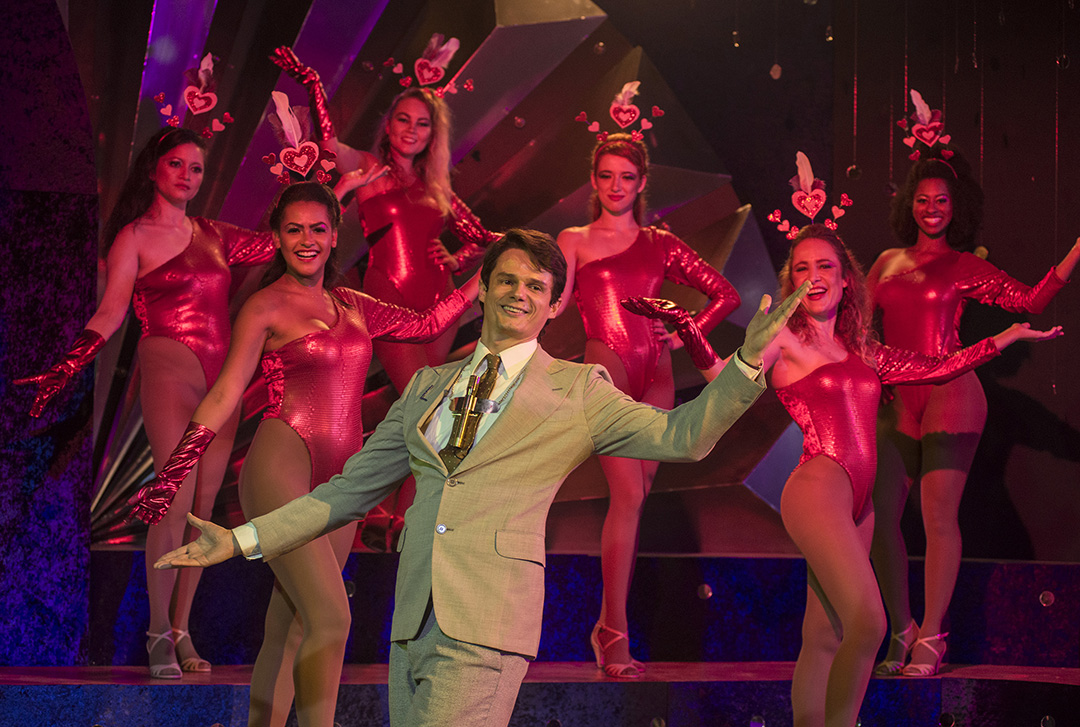
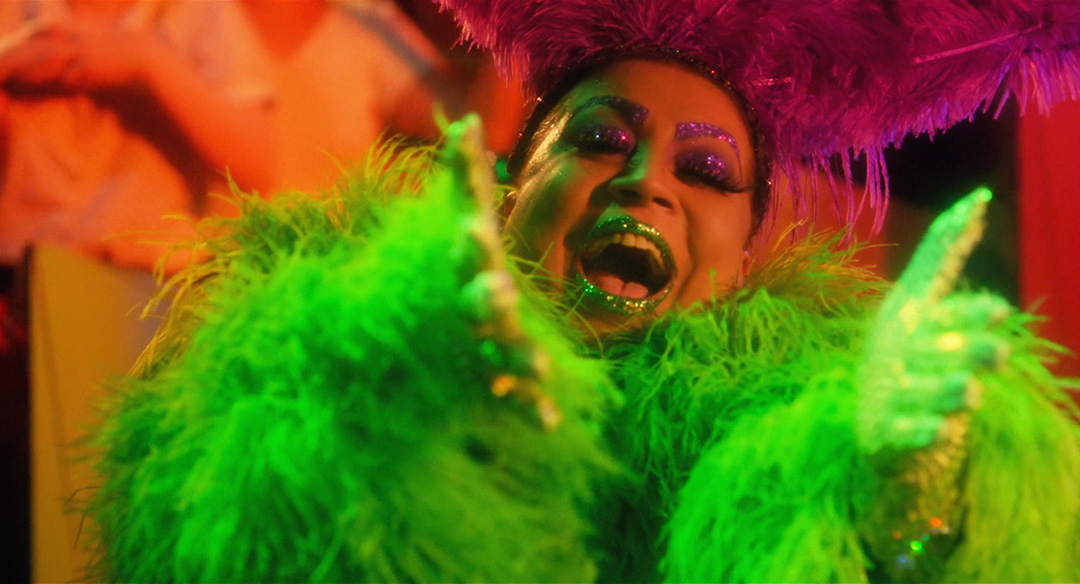
In regards to framing, we always took into account that we were framing for a TV screen, but with the awareness that the series could also be watched on a cell phone display. In this sense, it was different from what we would do in cinema, without super wide frames, for example.
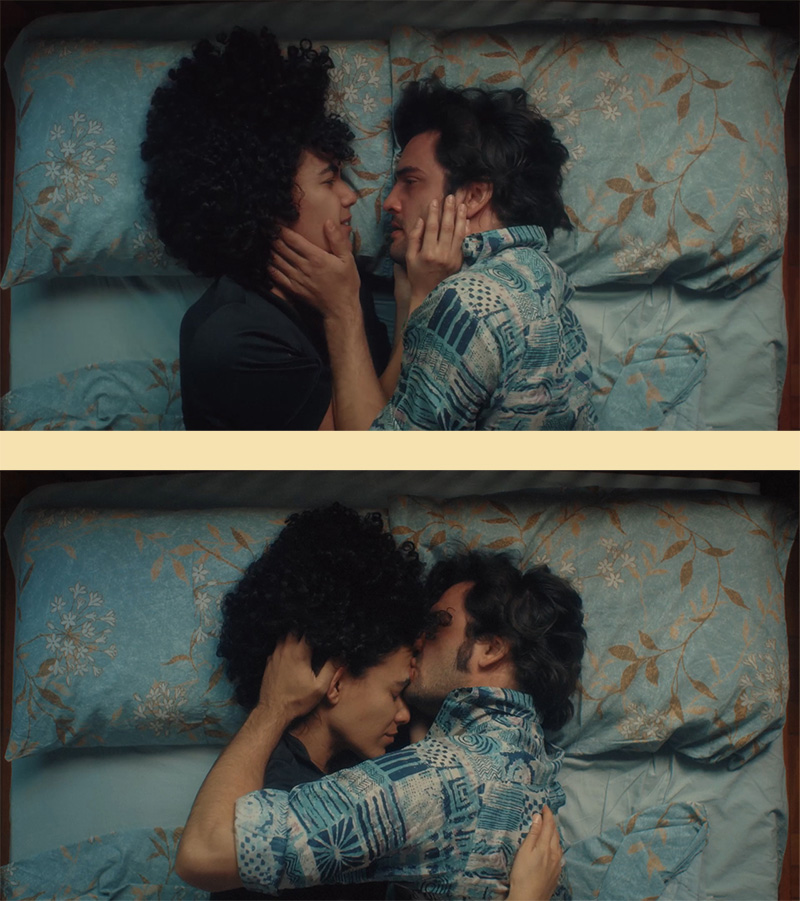
Some scenes didn’t have a lot of movement from the actors, but we managed to create a certain fluidity with the use of dolly tracks. Therefore it didn’t look too static and the audience doesn’t lose the rhythm of the moment.
CAMERA, LENSES AND LOTS OF FILTERS
We chose the Sony FS7 camera, for production and design reasons. It is economical and at the same time has a body ergonomics that allows, for example, to operate the camera on the shoulder without rigs or accessories. I went with the ZEISS T1.3 Super Speed kit which I like a lot, as we were looking for an image that was not too sharp. They have a vintage texture and an interesting bokeh. Even then, it still wasn’t enough. Due to the camera’s look we still had a predominant contemporary texture, so we moved on to the testing process.
I always work a lot with filters and I try to think of photography based on the texture that the story calls for. Before thinking about the lighting and composition, the first thing I think about is the texture that the script provokes in me. In the case of “Hit Parade”, the characters move through many night environments, it was a time when smoking was allowed everywhere, so the smoke and the highlight in excesses had to be printed in the image.
I researched a lot of filters. Generally, we do a research in an attempt to beautify. In this case, it was the other way around. We needed to cause certain “damage” to the image, bring some dirt, both in light and in the texture of the glass itself. I did some filter tests that I analyzed together with Marcelo in order to understand the ideal density balance, being aware that the idea was to exaggerate.
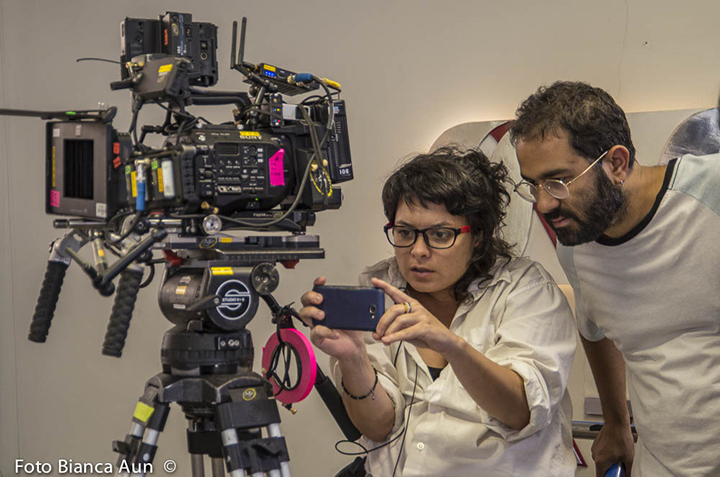
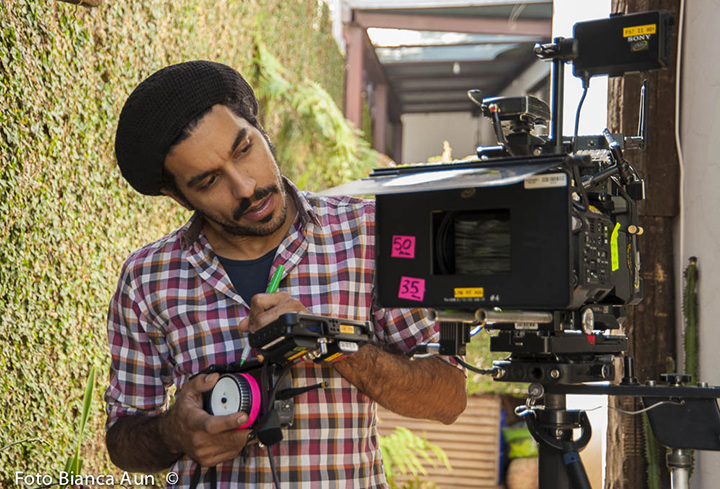
There was also a lot of conversation with the art director, Maíra Mesquita, a partner with whom I worked a lot since the tests in pre-production. She sent us a variety of fabrics to see how they would look on camera in different lighting situations. From there, we defined some backgrounds that would react better with light, reflecting more glare, even in underexposure situations. This understanding of the texture of the filters between both departments was very important for the art department, the choice of costumes and the elements that enhanced the sets.
LIGHTS
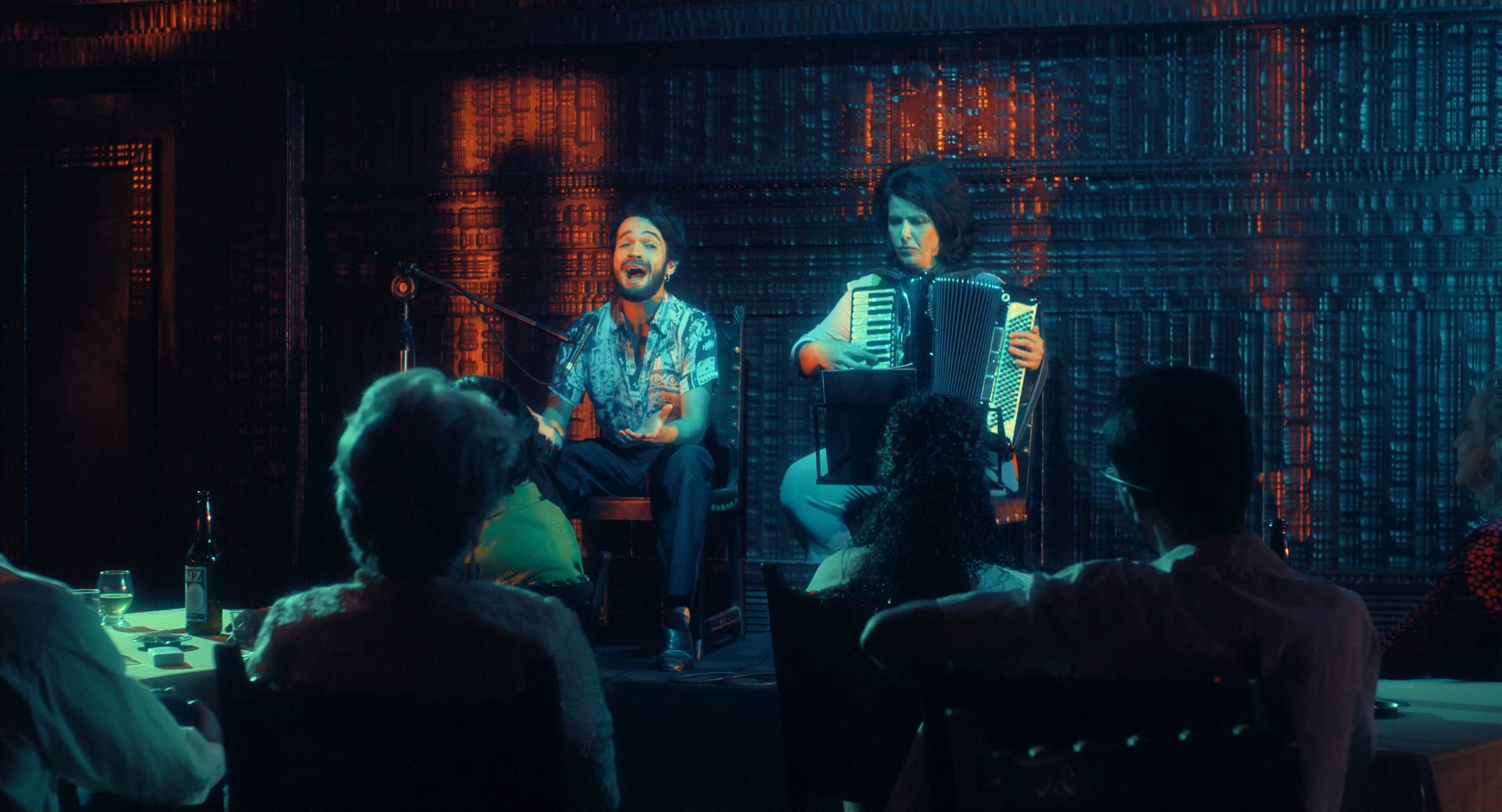
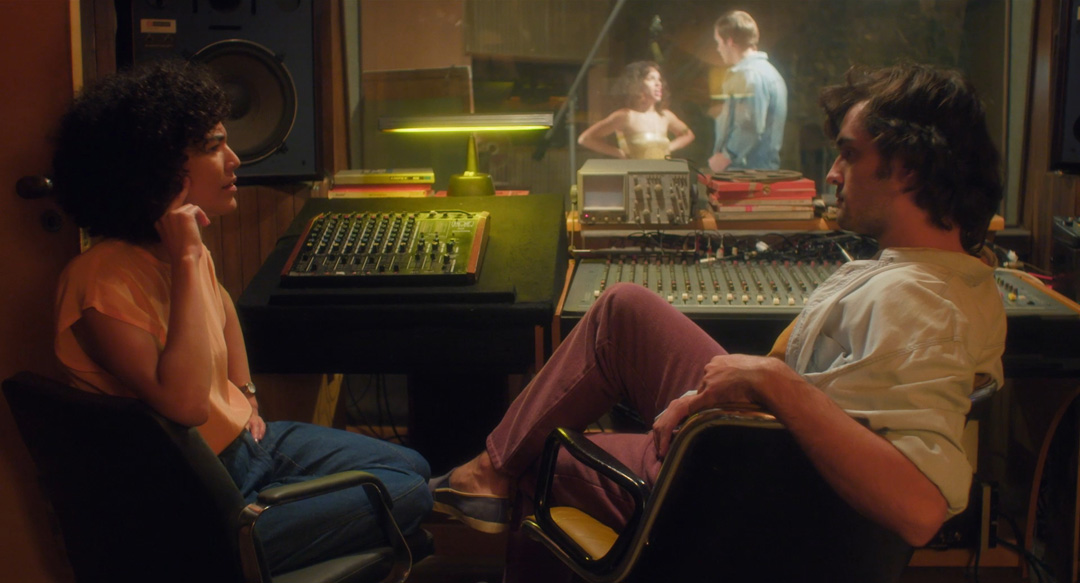
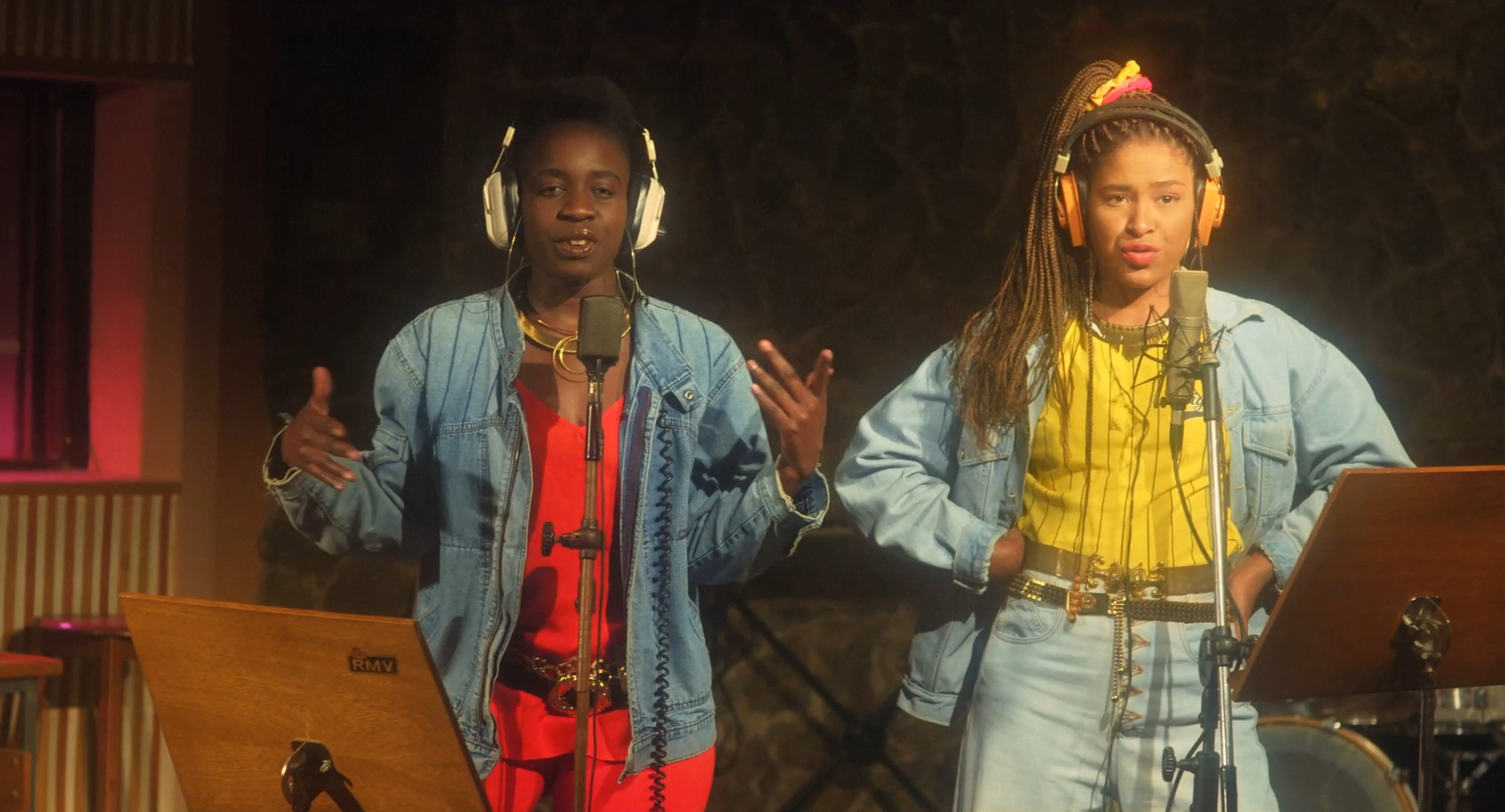
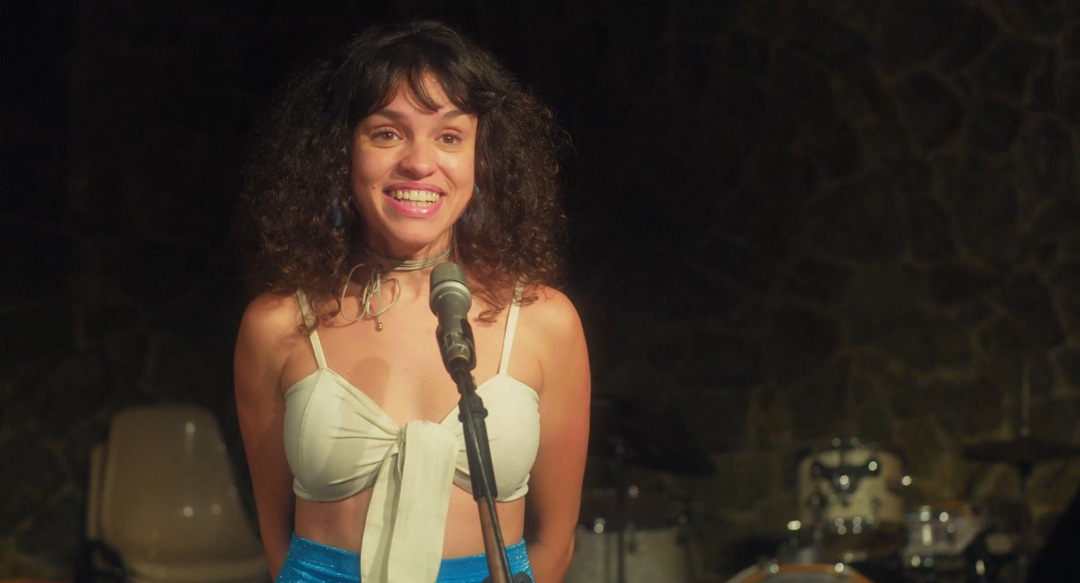
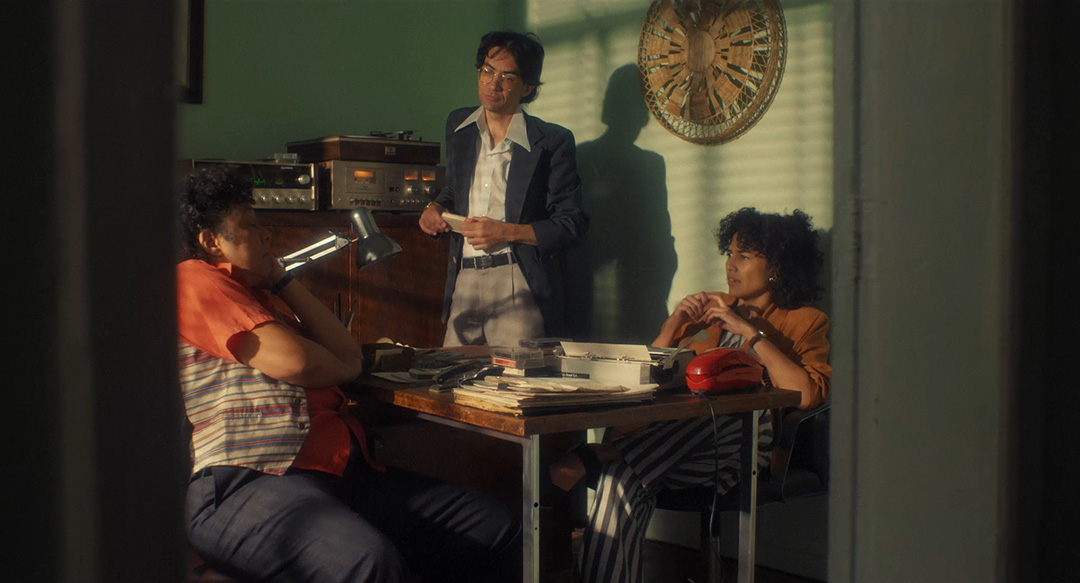
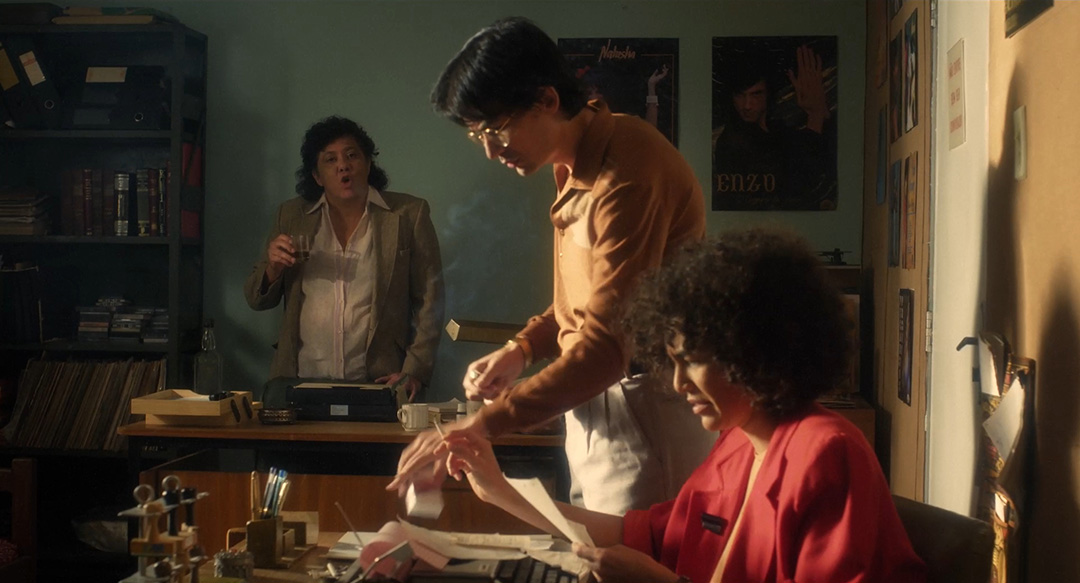
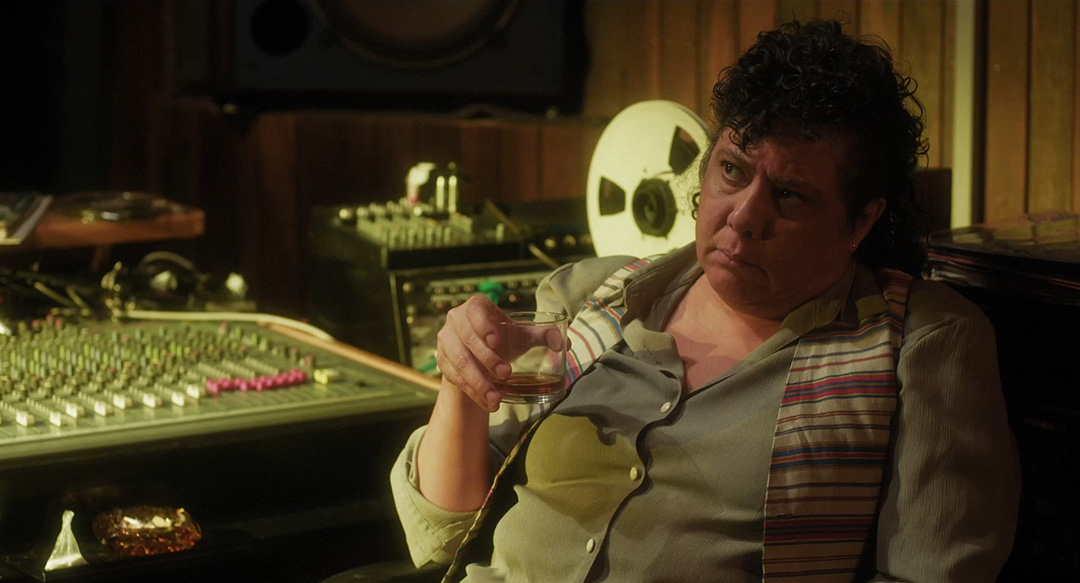
Messiê Jack owns a music label and later becomes artistic director of Rede Platina. His first office had a dirtier light, with fluorescent bulbs emulated with Kino Flo, more like what an institutional office would be. When he rises to the position and becomes artistic director of the Platinum TV station, he starts to work in an environment with translucent glass panels, which we use as the main light source, and a fill with a bounced 1.2KW HMI that produced a softer, more sober and colder light.
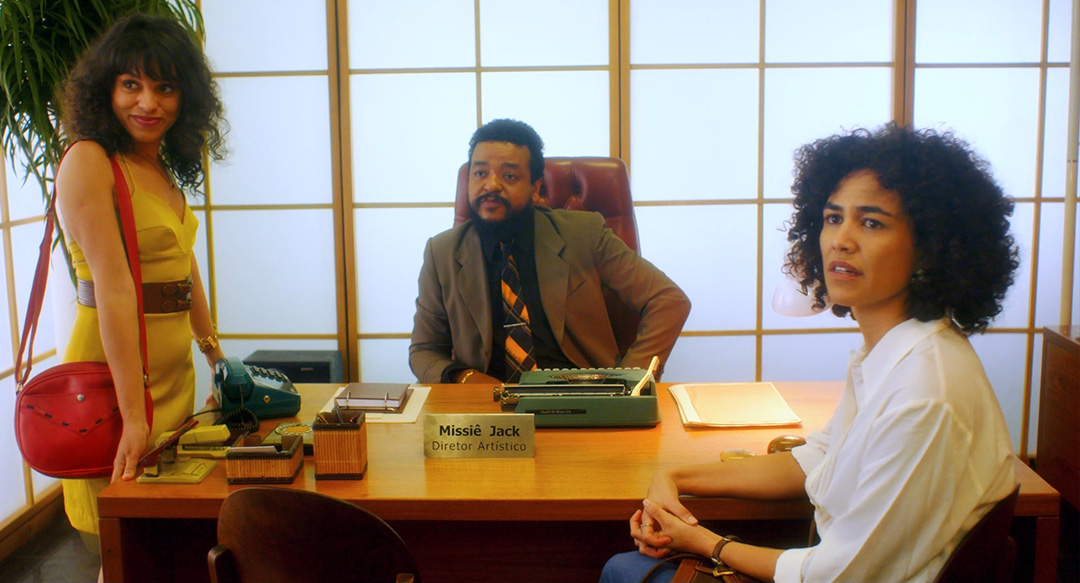
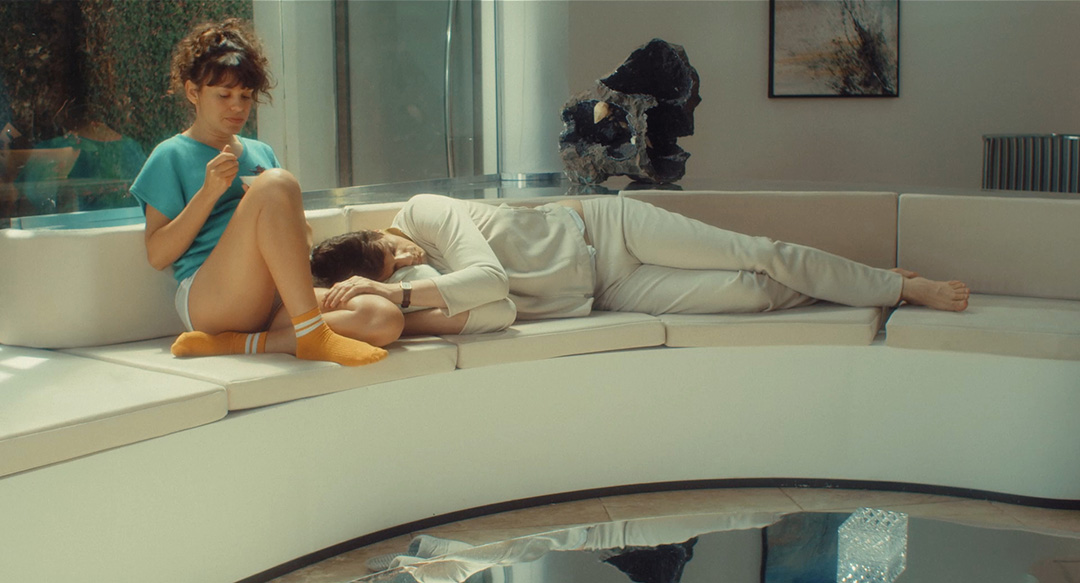
Lobinho’s mansion is a rich person’s house, a place of little contrast, where daylight is present in the spaces due to the large panoramic windows. We worked with a bounced 1.2KW HMI to compensate for the internal/external ratio, and a 4K, rented for these dates, which would make the backlight always present in the series, both day and night.
With Bill, who is a punk artist, the reference was 80s Germany and Fassbinder movies. The character lives with his family in an old, gothic house, with moldy textures, so the light is more greenish. His room is different, all with closed windows, even during the day, with more contrast and density, which reflects the depression atmosphere experienced by the character.
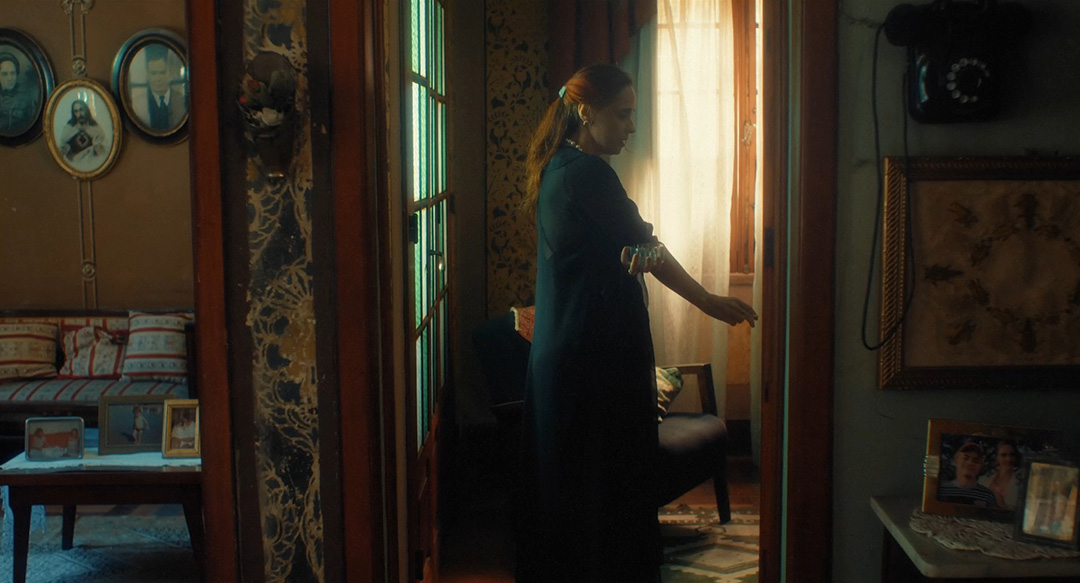
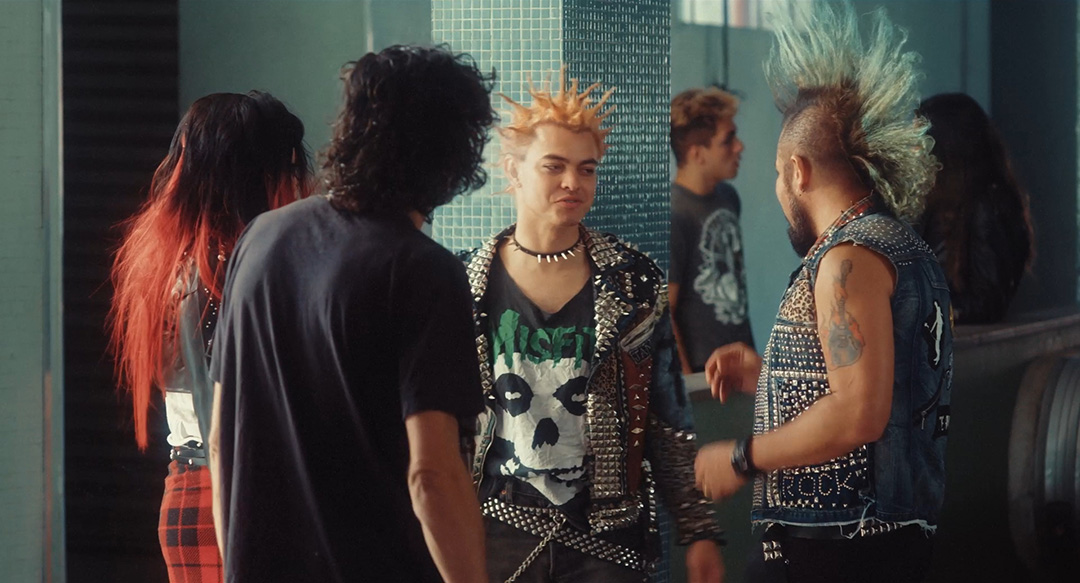
COLORS
We decided on the colors for the lights in each set according to the environment. At the Gonçalo nightclub, where Simão sings, a kind of underground cave, we worked on a cabaret atmosphere, with predominantly red lights. We also took advantage of the location mirrors to create a game of depth in the scene.
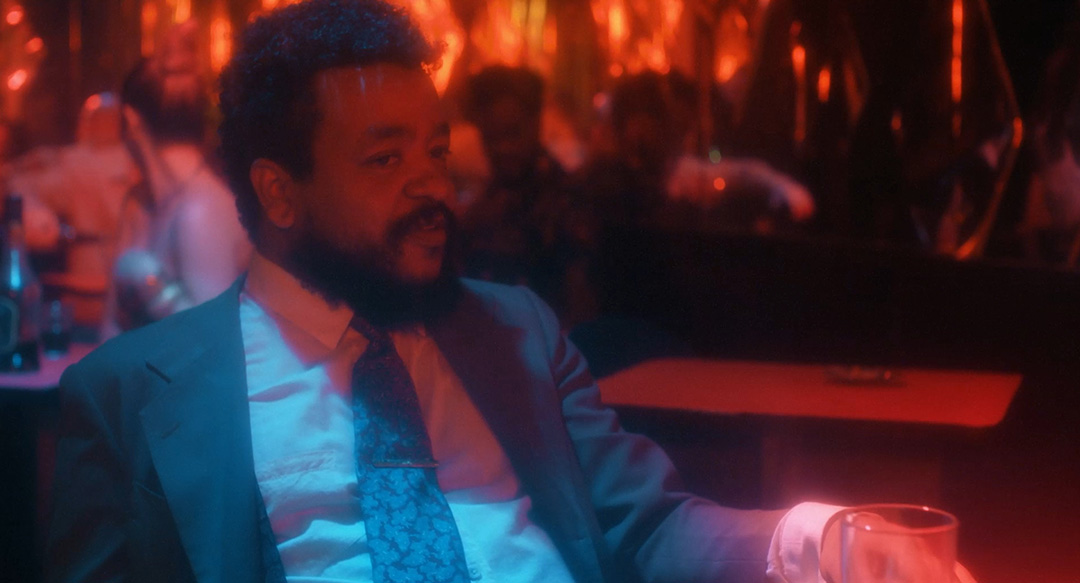
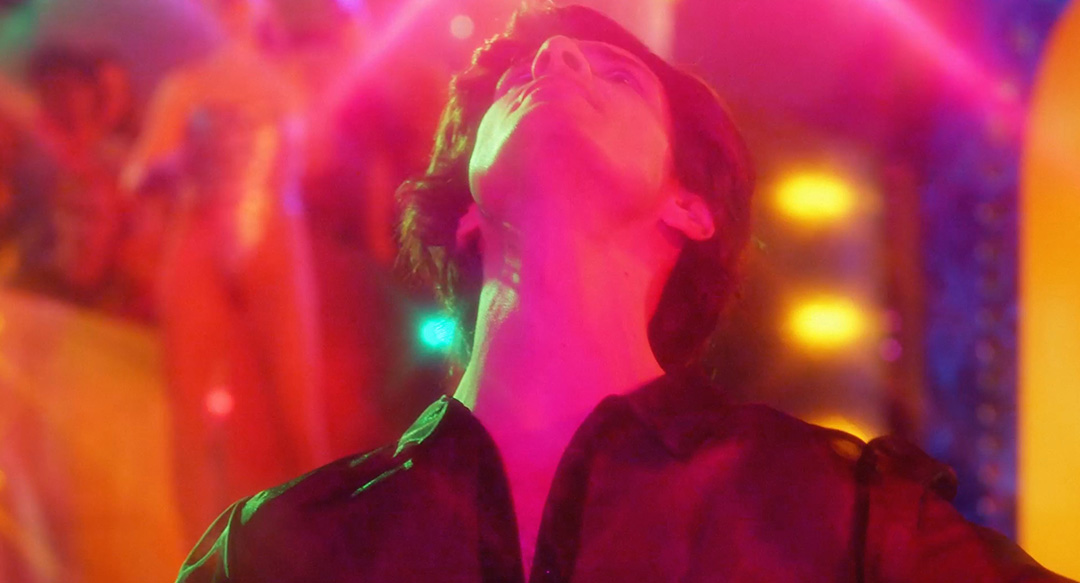

The TV show is the most pop environment, where we allow ourselves to explore everything. It’s a primary color space, which is a television thing. Thus, we emphasize the shades of blues, reds and yellows in color correction. The lights came from the structure of the set itself. The art team placed a panel of small lamps and small mirrors hanging by nylon thread that were lit by us and, when rotated, brought a of movement effect that was even more evident with the Star filter.
There are colored spots only on some specific characters. For the Indigo scenes, for example, we brought blue because of his name. We also changed the color combinations in the auditorium depending on the personality of the performing artist. We brought some of their identities by using colors in the lights. We worked with red for Frank Fabiano, as he is a romantic singer. The key of light varied according to the type of music, whether it was romantic, rock, pop or indie.

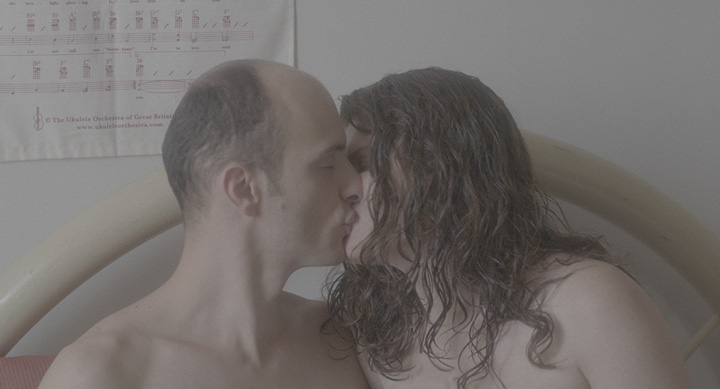
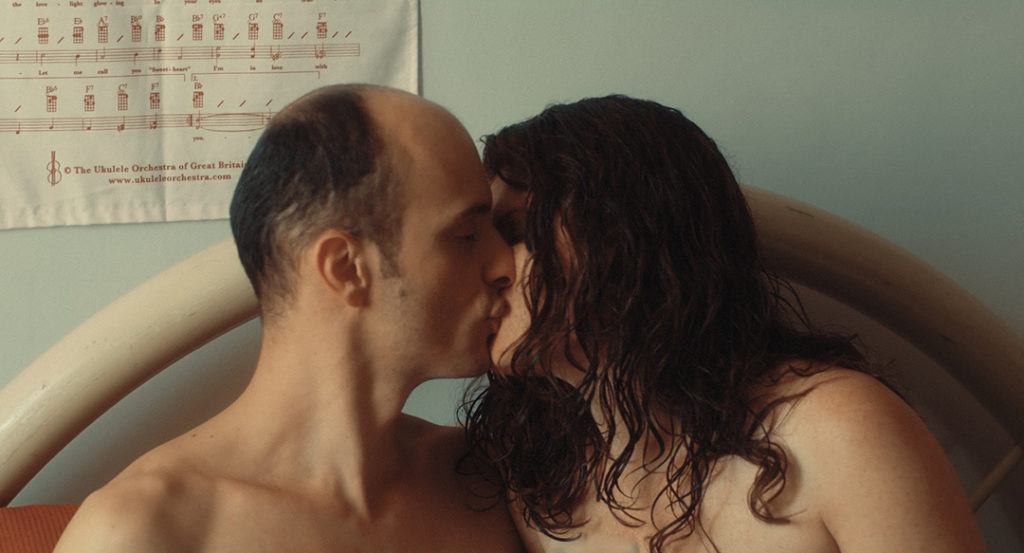

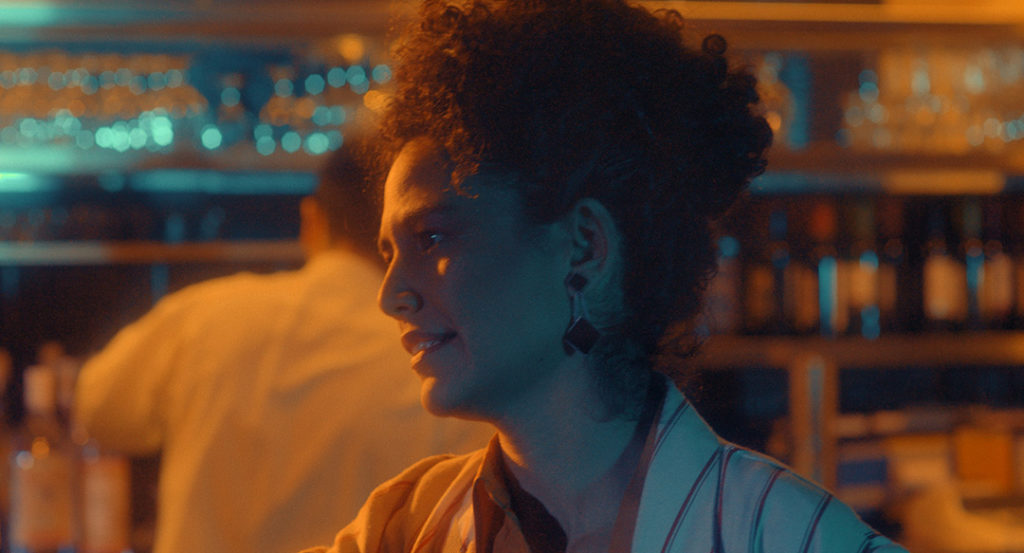
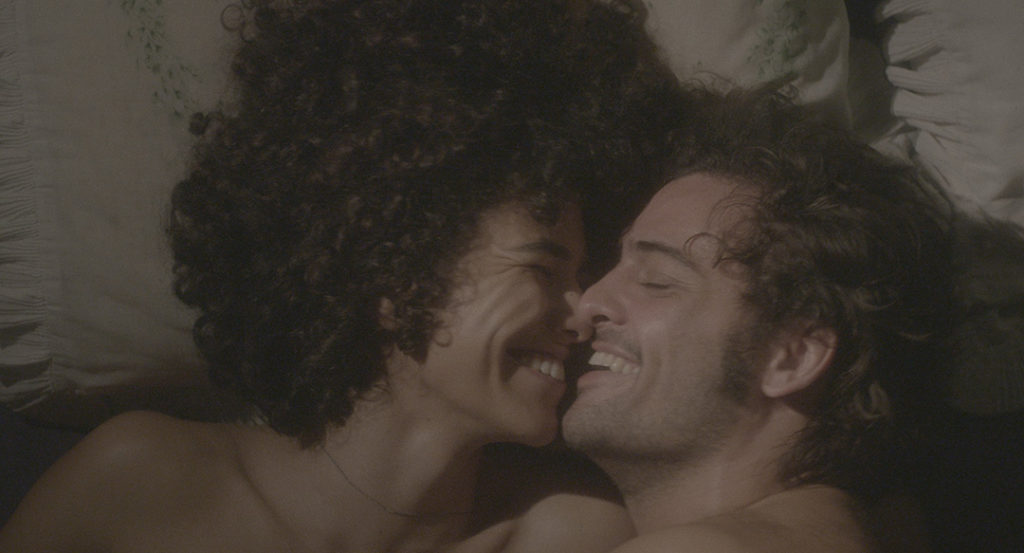
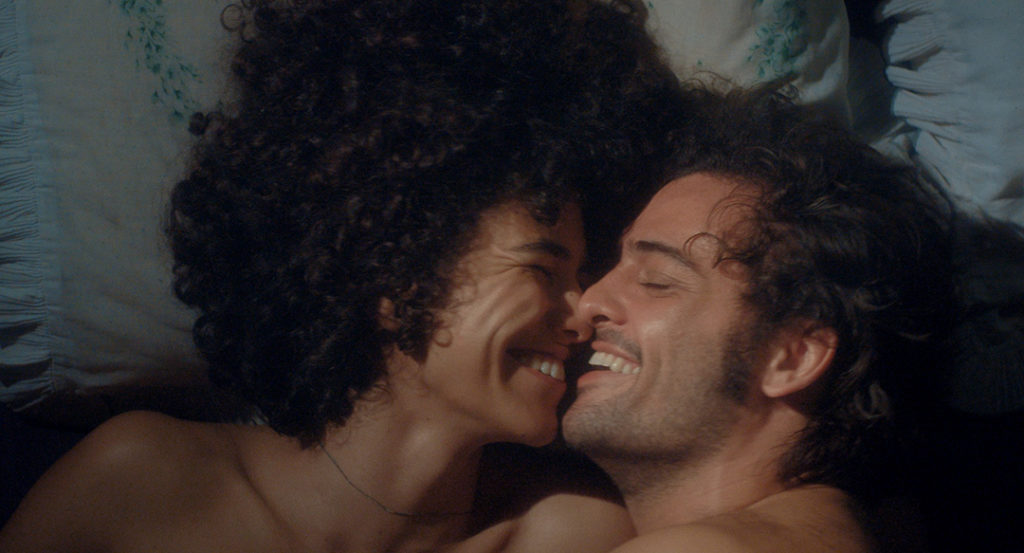
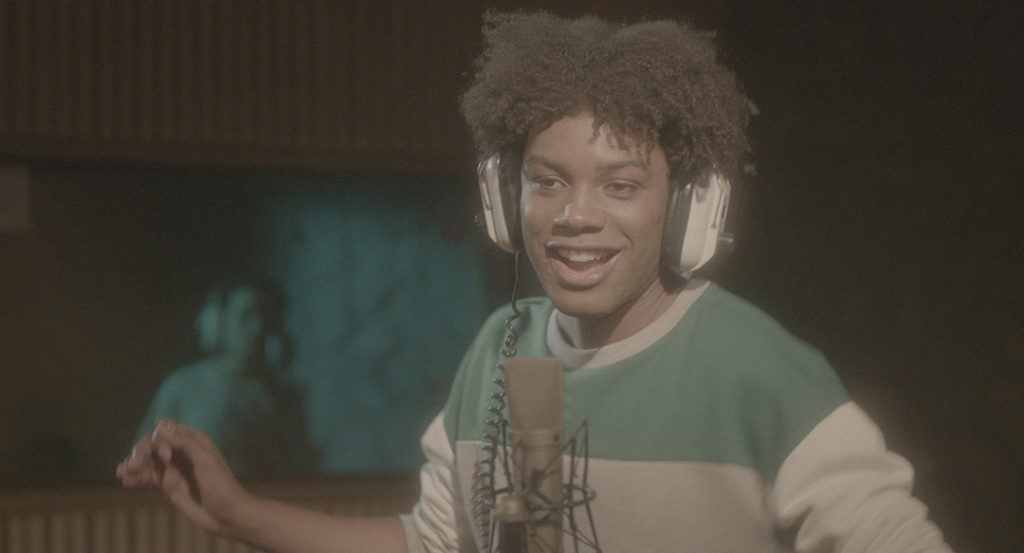

An important collaborator was Alexandre Cristófaro, a partner colorist with whom I have worked for several years. He followed the process since our tests in pre-production. We created a monitor LUT for set to see the look closest to what our final image would be, with the colors more saturated and the skins a yellowish hue. After filming, in color correction, we took a different path, based on photographs taken with a Kodak Ektachrome negative, which Marcelo had taken during the filming. This negative featured an addition of magenta on the skins, which we incorporated during coloring, creating a separation between the characters and the colors of the sets.
CUTOUTS, EFFECTS AND
DIGITAL COMPOSITIONS
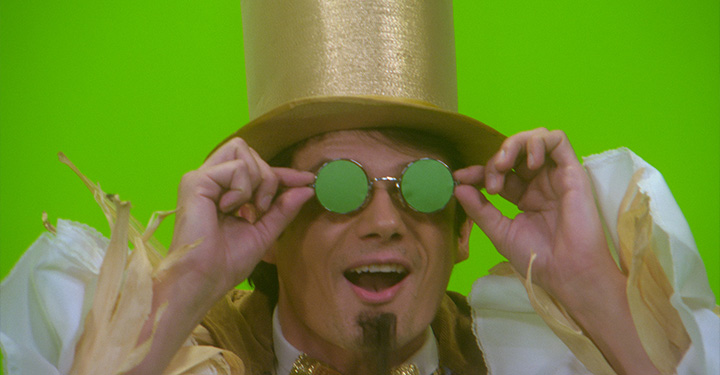

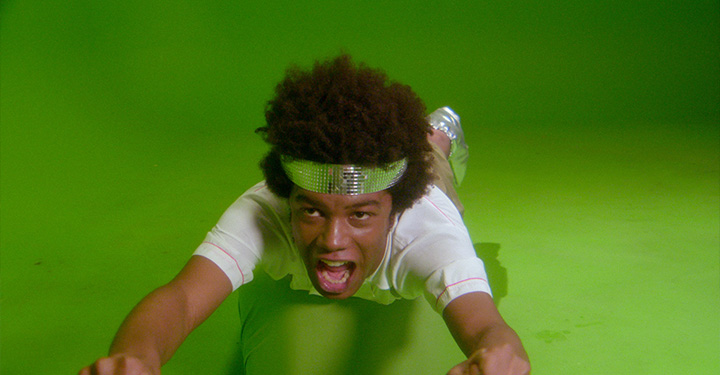

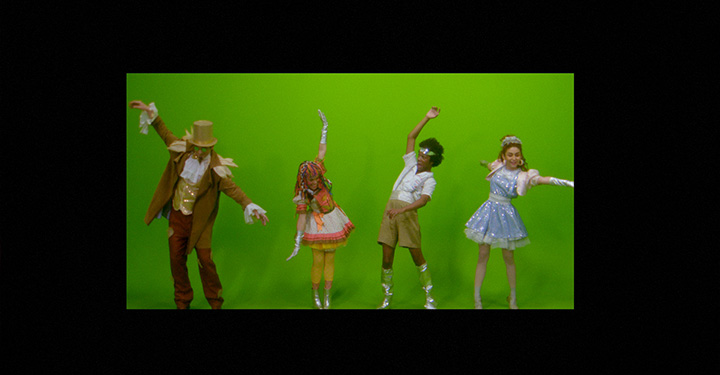
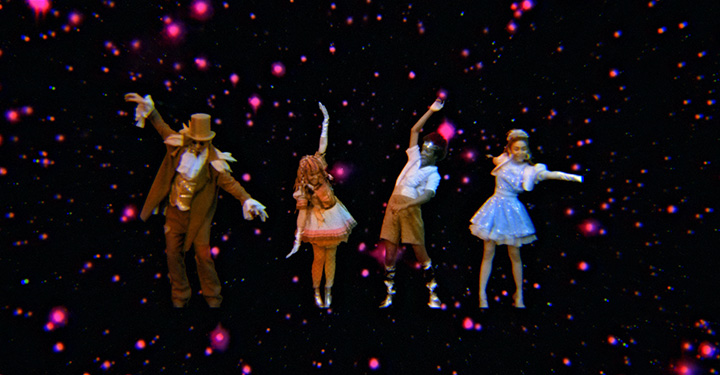
AN ARCHITECTURAL
BELO HORIZONTE
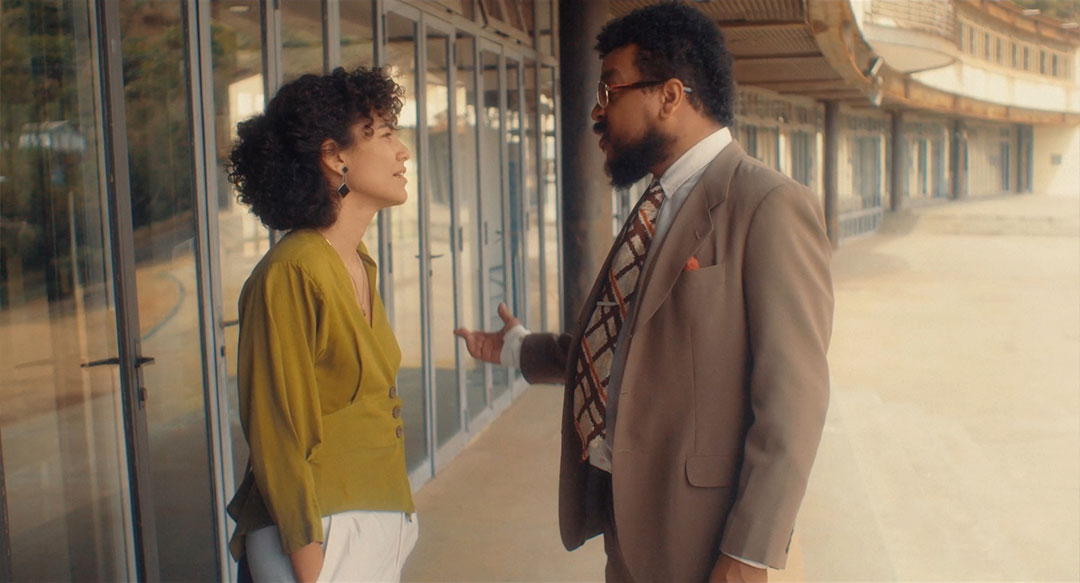
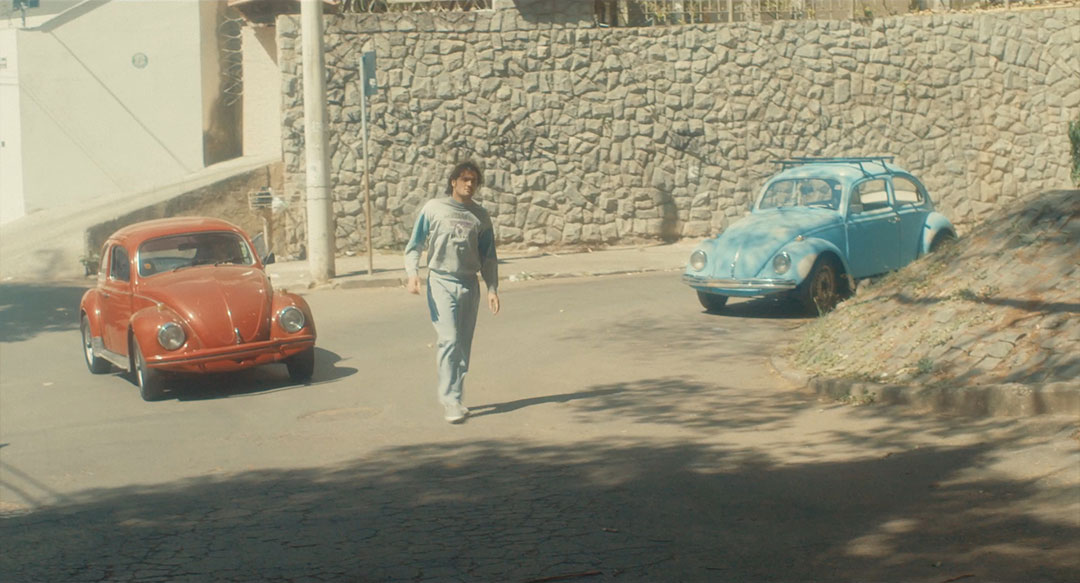
Lighting Equipment List:
(1x) 575W HMI
(1x) 200W HMI
(1x) ARRI SkyPanel S30
(2x) LEDMais Flo 120
(4x) LEDMais Flo 60
(4x) ARRI Fresnel 300W
(4x) ARRI Fresnel 150W
(4x) ARRI Fresnel 650W
(2x) ARRI Fresnel 1KW
(1x) LEDMais Painel 30×30
(1x) Fresnel 2KW
LEE Filters Gels:
058 – Lavander
115 – Peacock Blue
138 – Medium Blue
102 – Light Amber
124 – Dark Green
354 – Special Steel Blue
182 – Light Red
142 – Pale Violet
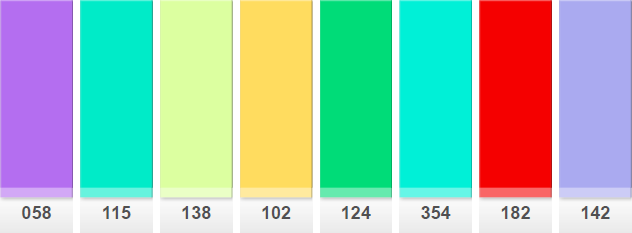
MINI BIO
Graduated from the Escuela Internacional de Cine y Televisión (in Cuba), Wilssa Esser is a member and co-founder of the Brazilian Collective of Female and Transgender Cinematographers (DAFB). Born in Venezuela, she has lived in Brazil since 2014. She received the Candango Award for Best Feature Film Cinematography at the Brasilia Festival of Brazilian Cinema for “Temporada” (2018), directed by André Novais, also winner of the Best Film at Mostra Competitiva. Among his last works in cinematography are the shorts “República” (2020), “Menarca” (2020), “Quebramar” (2019), “Cachorro” (2017), “Filme-Catástrofe” (2017) and the feature film “Mascarados” (2020).
